





Table Of Contents
- Cover
- Table of Contents
- Contact Information
- Introduction - pg 4
- Space - pg 5
- The Crew - pg 10
- Roles on the Ship - pg 12
- Movement in Space - pg 13
- Ship Combat - pg 15
- Gravity - pg 18
- Air in Space - pg 19
- Vehicles and Equipment - pg 20
- Magic in the Phlogiston - pg 23
- Spells - pg 25
- Feats - pg 27
- Celestial Mechanics - pg 28
- Spelljammer Vessel Sheet - pg 32
- LEGAL INFORMATION - OGL v1.0a

Contact Information
The writer can be contacted:
Reddit- /u/Ubiquity4321
E-mail- TheSohnly [at] gmail [dot] com
Thanks
- I'd like to give a special thanks to GM Binder (created by Levi Rosol), who provided the wonderful site that I am typing this document on.
- All clipart found via The Open Clip Art Search Engine
- /u/Anathemys for the Unofficial Style Guide
- /u/QalarValar for the Watercolor Guide
- DMsGuild.com for some (purchased) assets and art
- Paul Hughes for inspiration (and permission) on random galaxy generation.
- Style and Grammar editing done by - Abby H. @ The Dice Queen
- Additional thanks (in no particular order) are the friends at the Discord of Many Things, /r/UnearthedArcana, /r/Spelljammer, The D&D Plaza Discord, The Matt Colville Discord, Danielle Lauzon (Game Developer at John Wick Productions) for advice on Stations, Eugene S. (The Web Wizard of Spelljammer.org), and Wizards of the Coast. RIP TSR Games.
- Additional playtesting done by - Dorian Kernytsky, Stephen Anhalt, Vendredi Chea, Chris Friel, and Joseph (TEA! ) Cuthbert.
Much love, everyone. Thank you.
Legal
- This entire document is being published under OGL v1.0a
- A full description of the OGL (as required for publishing under OGL 1.0a) is listed on page 34
Art Credits
All artwork in this document is published under either Creative Commons or a similar (free-as-in-speech) licensing. Please contact me to correct any errors or omissions. I tried my absolute best to stay as open source as possible.
- Covers By Jschulman555 - Own work, CC BY 3.0, Link
- The Red Line and D&D Homebrew image by Scott Tolksdorf
- MYTHKELI by by Luigi Castellani
- Time by Pete Linforth
- Various Illustrations by Louis Glanzman, from A TOM CORBETT Space Cadet Adventure DANGER IN DEEP SPACE By CAREY ROCKWELL, 1953
- Ship Firing Cannons from The Story of Our Merchant Marine by Willis J. Abbot, 1919
- Ship on Waves from Sailing Alone Around the World by Joshua Slocum. Illustrations by Thomas Fogarty and George Varian. Published 1911. Available on Google Books
- Naval Design from a drawing in Fram over Polhavet, Fridtjof Nansen, 1897
- BDWARF and MYTHSPLASH by Earl Geier
- SYSADVANCE, CULTSPLASH, CGGEAR, TMAGICARMORY, and TTEXTSPOT by David Lewis Johnson
- Project Mango Concept Art By David Revoy / Blender Foundation - Own work, CC BY 3.0, Link
- Kevin Crawford of Sine Nomine Publishsing
- William "Captain" Kidd pirate illustration from 1905 book "An Alphabet of History" by Wilbur Dick Nesbit Open Library Link
- Star illustration here, source was found, then lost
- Fantasy Cloud Castle by Donna Kirby
- MAGSPELL1 and SORCSPELL by Joyce Maureira
- Gravity by emaze.com
- Extent of air envelope by me
- The Old Man by Brigitte Werner
- Catapult from Encyclopedia Romana 1962
- Some Assets for the Spelljammer Vessel sheet borrowed (with permission) from The Current Standard Character Sheet v.1.4 by supersonic159
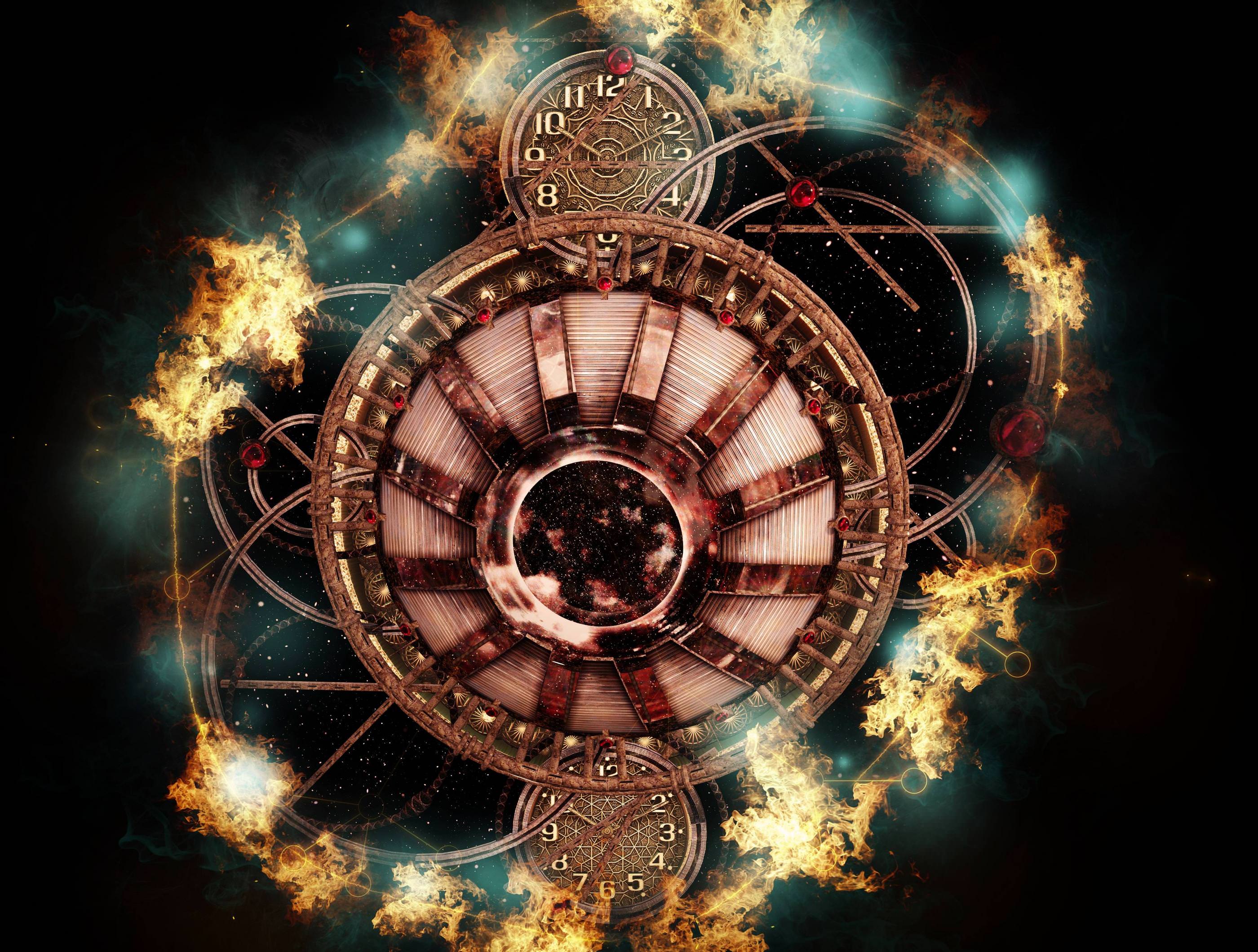
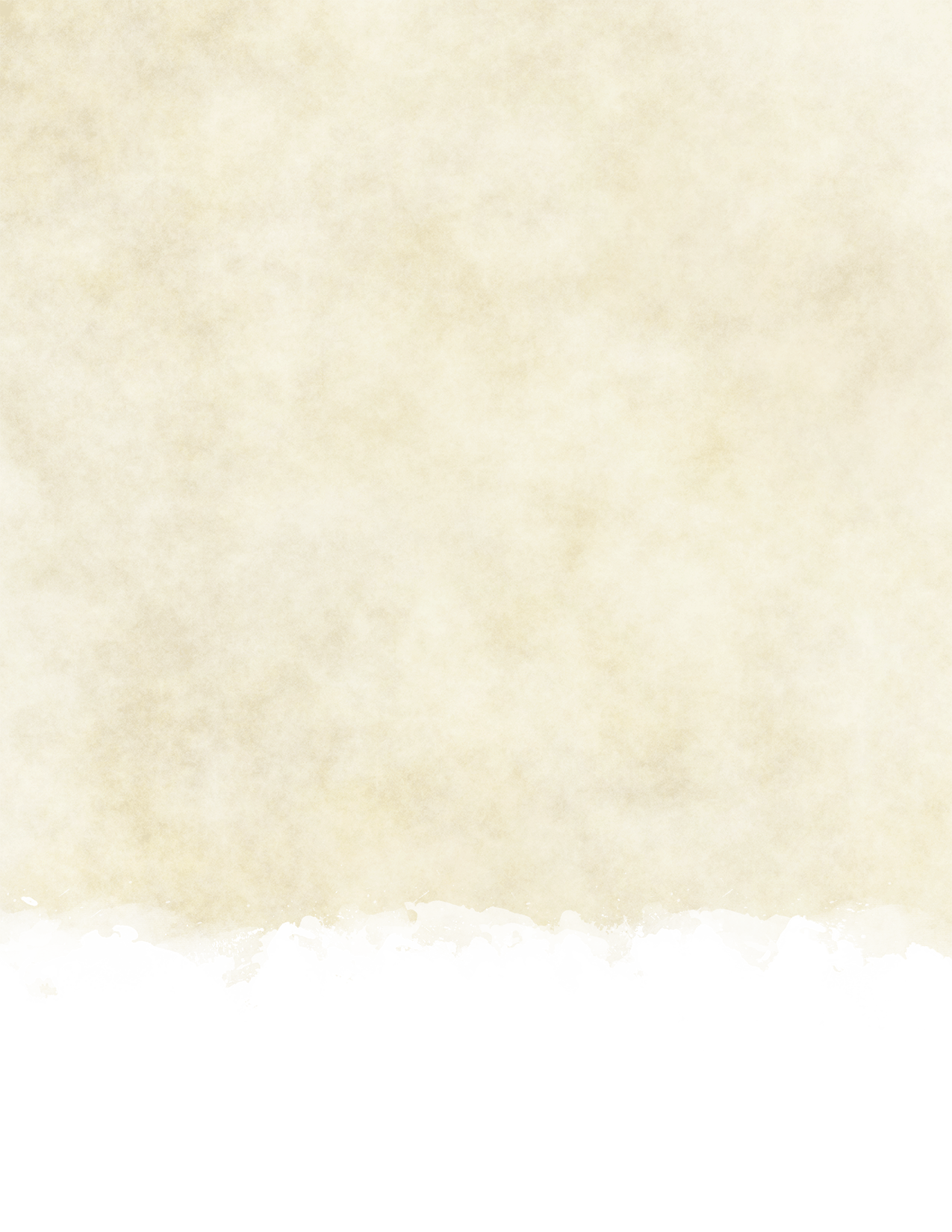
Introduction
Imagine a universe where square worlds spin around gemstone suns. Where planets lie cradled in the roots of an oak tree so vast its leaves twirl around brightly burning suns. Where ships of wood sail the void between worlds and do battle with catapult and ballista, spell and sword, where an asteroid may be a safe harbor, a slaver's den, or a hungry creature eager to devour any that pass by. Where daring swashbucklers and scoundrels race for fantastic treasures and literally touch the stars. Where terrifying beasts with the power to destroy whole planets roam. Welcome . . . to Spelljammer!
In the Spelljammer campaign, the fantastic is possible and one is limited only by the depths of their imagination. Sailing ships, enwrapped in bubbles of air, travel empty Wildspace, moved by the power of their mystic Helms. Gravity is a matter of convenience, where a crew of adventurers can tour the bottom of their ship, and worlds come in all shapes and sizes. Whole solar systems are surrounded by colossal spheres made of an unbreakable, crystal-like substance to protect them from an ocean of swirling light and color, the flammable Phlogiston, which divides the void between stars.
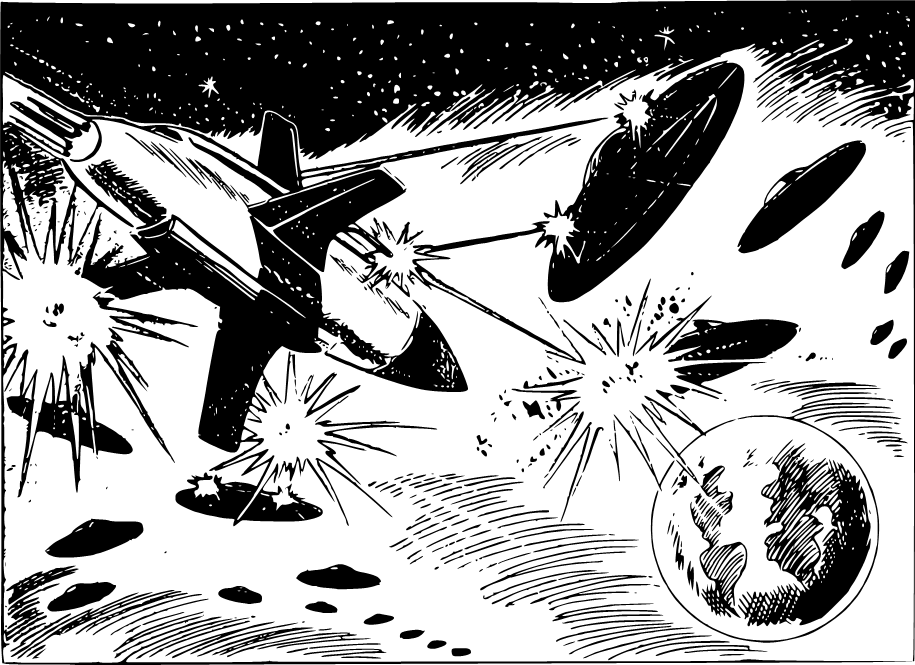
Space
Wildspace is what comes to mind when we talk of "Space." It is the vast emptiness that lies between the planets and the stars. All the celestial bodies within a Crystal Shell float in the airless void called Wildspace. Conventional (meaning "those that take place on the material plane") interplanetary journeys around a solar system take place within Wildspace. The regions of Wildspace are primarily airless vacuums, but the cosmos is large and vast with plenty of exceptions to the rules. Wildspace is not truly a void, although it is often referred to in that way. There is plenty to explore and conquer. Life and Time are the only constants.
Crystal Spheres
All Wildspace is bounded by a shell of impenetrable crystal, called a Crystal Sphere. Inside the Crystal Sphere is the airless vacuum of Wildspace and the planets where adventure takes place. Outside the Crystal Sphere is the rainbow river of Phlogiston and more Crystal Spheres. You can consider a Sphere to contain one solar system, but that's a tremendous oversimplification.
The size of a Crystal Sphere is determined by the size of the planetary system inside. Usually a Crystal Sphere has a radius twice as big as the orbital radius of the outermost planetary body in the system (ie. the distance from the shell to the outermost planetary body of the system is the same as the distance from that outermost body to the center point of the system). Due to their great size, the outside of a Crystal Sphere appears perfectly flat when viewed up close. The curvature is so gradual that it is completely undetectable to anyone who is close enough to see the Crystal Sphere through the obscuring Phlogiston. The spheres consist of an unbreakable, murky, ceramic-like material of unknown origin.
Some legends state (and theologians agree) that the smooth-surfaced shells were created and positioned by the gods themselves to protect their worlds from the ravages of the Phlogiston, which is held to be the prime matter of the universe. Less charitable philosophers maintain that such shells were placed by an even higher authority to keep gods and men in and confine their activities. Whatever their origin, the Crystal Shells are uniform. All appear as great, dark, featureless spheres of unidentifiable matter.
The Crystal Spheres are defiantly solid. They have no gravity along either their interior or exterior sides (an exception to the rule that all large objects have gravity). No magic has been found that can damage or alter the surface of a shell, with the exception of those spells which cause portals to open. Even this is believed to be nothing more than an artificial triggering of a natural phenomenon, as naturally occurring portals appear seemingly at random. They are apparently immune to the effects of wishes and even the wills of the outer planar powers.
The Phlogiston
Also called The Flow, the Phlogiston is a turbulent, unstable, multicolored, fluorescent gas-like medium which fills the regions between Crystal Spheres. For lack of a better definition, it is a river in which all Crystal Spheres bob, weave, and float. Its currents carry the spheres around a shifting stream, ever moving. Very little is known for certain about the Phlogiston, except for every system known is encased within a Crystal Sphere, and no known planetoids exist floating freely in the Phlogiston. Essentially, the Crystal Sphere keeps the Wildspace in and the Phlogiston out (which is a tremendous simplification, but it is easy to grasp). Phlogiston also cannot exist inside a Shell, and all attempts at doing so causes the somehow-captured Phologiston to have vanished upon inspection, leaving no traces. The rainbow ocean allows Spelljamming ships to attain greater velocities. These speeds have defied measurement since the phlogiston is without permanent landmarks or markers.
In general, it takes from 10-100 days to travel from one Crystal Sphere to another. The sphere reached is random, unless you have either a guide or a device installed in the ship to show you the way. Shortcuts exist through spheres to other spheres. Some spheres drift into and out of proximity with each other, so that just because you reach an area once does not mean that you will find it again.
It is also violently and exponentially flammable. An early researcher (wanting to have a better look at some of the ocean he captured) lit a match with the intent to burn a candle. Upon sparking, an explosion immediately erupted from the match head, taking most of the researchers hand. . . In short, a match acts as a powerful firework, a firework acts as a fireball, and the devastation that a fireball would cause may take even the largest ships (and the caster) with it.
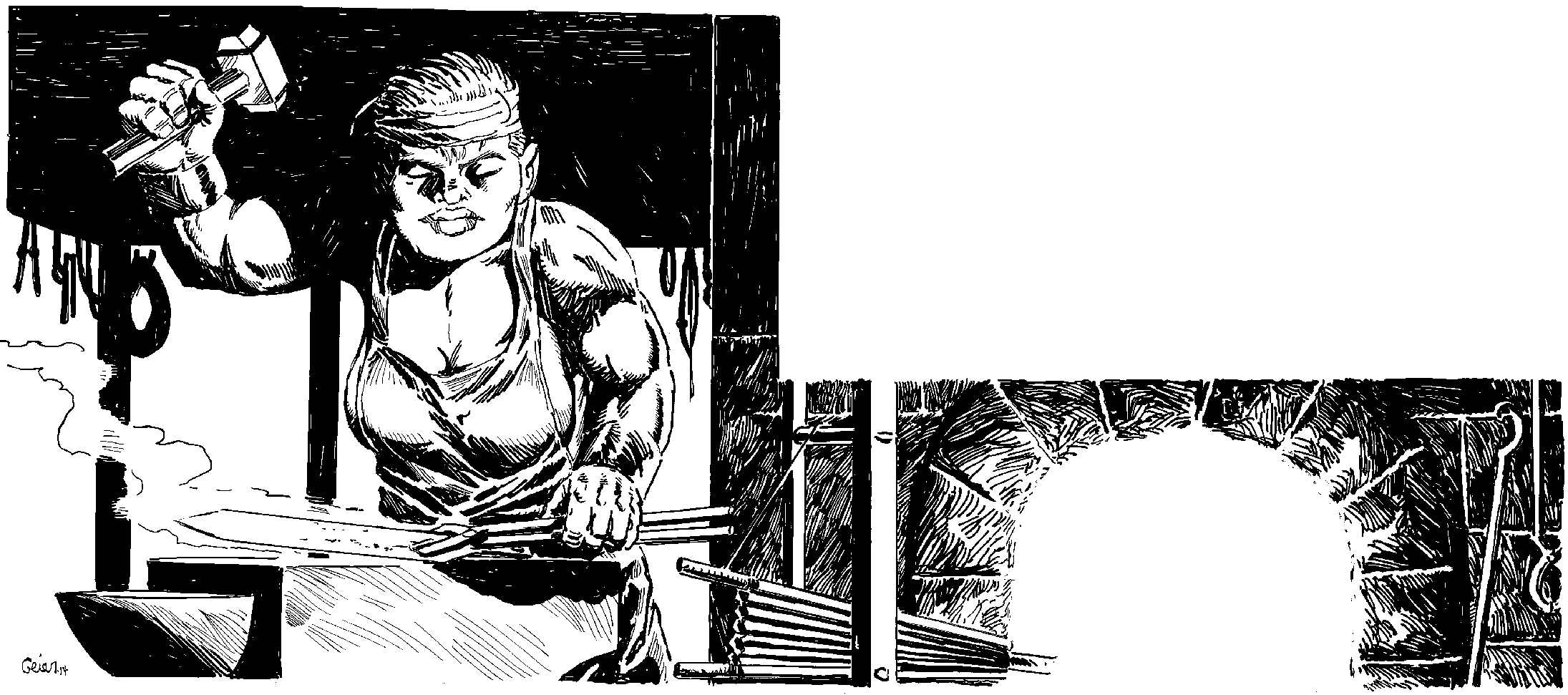
Space Travel
Space travel is hard to grasp by most groundlings. They look up at the skies and see a vast emptiness of infinite beauty.
Spelljamming ships can be made of anything: normal, sea-faring galleons; gargantuan, mutated bodies of Beholders; ships grown in a vast forest-turned-dry-dock; bones of long-dead dragons; contraptions made from junk yards bound together by rubber-bands; the splinters and masts of defeated ships; or even the very mountains themselves. What makes them a Spelljamming ship is the Spelljamming Helm, whether permanently bolted down, or temporarily there.
On Spelljamming Helms
Ships travel through Wildspace by means of the Spelljamming Helm - a magical device which converts mystical energy into motive force; ie. the "push" that moves a Spelljamming ship. This allows rapid movement from planet to planet. Some of the specifics vary from race-to-race, and ship-to-ship; however, most ships are equipped with a magical device known as a Spelljamming Helm. While the helm provides the push forward, the crew provides the maneuvering, stopping, and docking.
A Helm can be made to look like almost anything: A lofty perch made of hard oak, with pillows in the seat and back, and topped with gold filigree; a sleek, futuristic chair made of obsidian and lined with purple silks; a large leaf, elegantly grown into position and automatically shaping to fit it's user; a meditiation bench, as simplistic in style as it is in make; or a large uncomfortable iron throne constructed from the swords of a defeated army. How a Helm looks will speak volumes about both its creator, as well as its user. All will function the same and provide the necessary focus point to move about space. Generally, it's installed onto the Bridge of a ship, away from prying eyes and (more importantly) attacks.
There are many sorts of basic Spelljammer Helms: Minor and Major. All Helms require the user’s Concentration to function, as if the user were concentrating on a spell. Due to the Concentration required, no more than eight hours can be spent at a time using this device by one caster. Attempts to "push through" may cause one point of exhaustion (as per the rules for a forced march in chapter 8 of the Player's Handbook).
Other sorts of rare or advanced Helms include:
- Lifejammers - These helms suck the very life from the user to power a vessel and perform special maneuvers.
- Orbus - Mutated and specially grown Beholder-kin, used by the various Beholder races to provide movement to their otherworldly vessels.
- Artiforge - This device is installed in a ships core and provides the force necessary for movement throughout space without a helmsman. This does require a forgemaster and a portion of the crew forging to ensure proper upkeep and use of the forge itself. As this doubles as a blacksmiths forge for creating weapons and armor, a certain output of those forge-created items is needed in order to keep the fire burning and the ship moving forward.
- Sequence Helms - This helm type allows for multiple characters to contribute to the overall Speed of a vessel, but halves a single user's contribution to the overall Ships speed. Helm Rating - detailed on the next page - is calculated normally, then halved, rounded down. The number of Sequence helms able to contribute to the ship speed on a single vessel is unlimited.
- Rare and otherwise legendary Helms allow casting while simultaneously piloting the ship, remote control of a ship, full movement about the vessel, and much more!
Any character may use a helm, though only one character may use a single helm at a time. Attunement to the helm requires a short rest to ensure that the adventurer understands how to concentrate properly and convert their innate magical energy into ship movement. It takes one action to activate, and one action to deactivate the Helm. Characters with the Spellcasting, Ki, and Pact Magic class features can use additional abilities of the helm, listed later in this document.
Exhausted characters attempting to use a Helm reduce the total Speed of the ship by the number of exhaustion points they have attained. After 48 continuous hours on the Helm, regardless of the ship's current Speed or the number of exhaustion points gained, the individual using the Helm will pass out and be unable to use the Helm again until they complete a Long Rest.
Additionally while on the Helm, the Helmsman can observe her surroundings normally, but also gains an awareness of the space around the ship. This awareness is equivalent to what would be gained by a lookout. As an action, you can see from any point in or on the ship until the start of your next turn, gaining the benefits of any special senses that the ship has. During this time, you are deaf and blind with regard to your own senses.
While using the Helm to power a ship, the adventurer is unable to cast a spell of 1st level or higher, and is considered restrained. The individual seated upon the Helm can talk and act normally, but cannot leave the Helm while the ship is in motion.
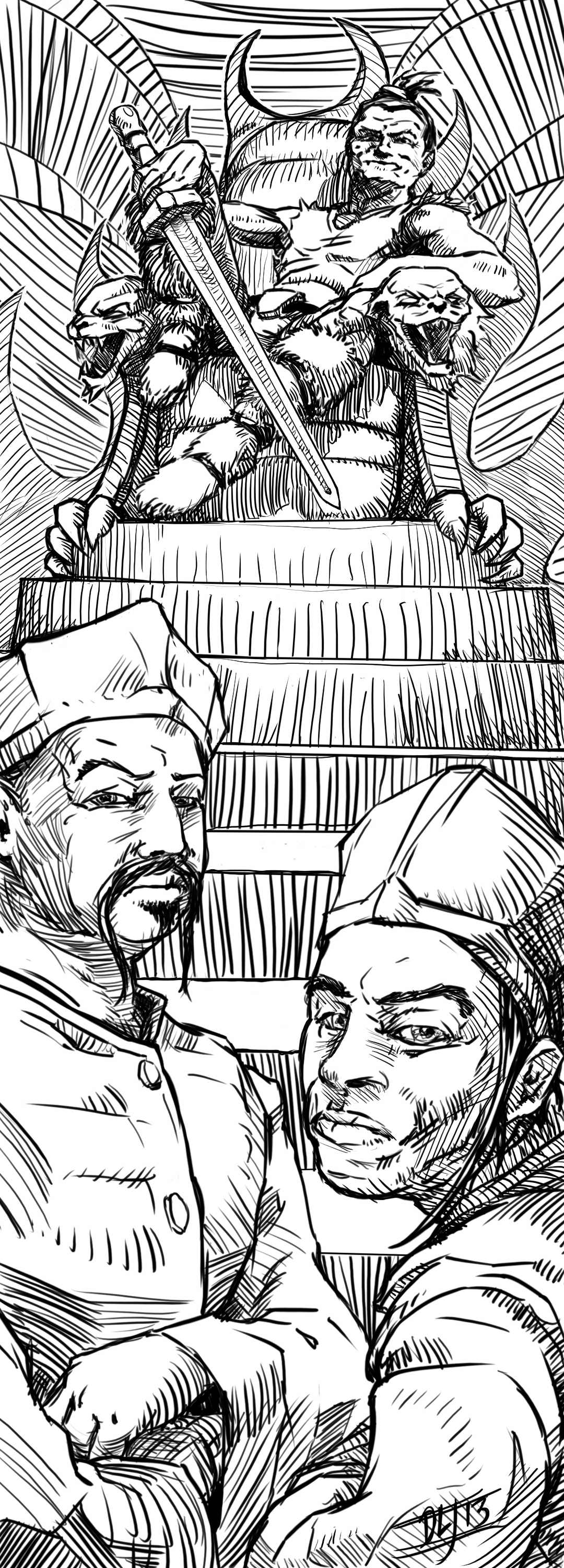
Determining Helm Rating
Use the table below to determine your Helm Rating to spellcaster level ratio when determining the ships overall Speed when using a helm to pilot a ship. A Minor Helm grants a 1:3 ratio of Helm Rating to spellcaster level, and a Major Helm grants a 1:2 ratio of Helm Rating to spellcaster level. This is similar to determining your spell slots when multiclassing, but all classes are able to provide motive force when using a helm to pilot a ship (Players handbook p.163-164)
Add together all your levels in the Bard, Cleric, Druid, Sorceror, Warlock, and Wizard classes, half your levels (rounded down) in the Paladin, Monk, Ranger, Mystic, and Artificer classes, and a third of the levels taken in Fighter or Rogue classes (rounded down) if you have the Eldritch Knight or the Arcane Trickster archetype. Characters with levels in classes that do not grant the Spellcasting, Pact Magic, Psionics, or Ki abilities divide by four (rounded down, a minimum of 1) to determine Helm Rating.
Example 1: A 10th level wizard using a Minor Helm will have a spellcaster level of 10, and that same character grants a Helm Rating of 3 to the overall ship speed.
Example 2: A character that has multiclassed a 5th-level bard and a 3rd-level barbarian will have a spellcaster level of 6, and that same character using a Major Helm will grant a Helm Rating of 3 to the overall Speed.
Example 3: A character that has multiclassed a 6th level warlock and an 8th level paladin will have a spellcaster level of 10, and that same character using a Major Helm will grant a Helm Rating of 5 to the overall Speed.
Helm Rating
| Spellcaster Level | Minor Helm | Major Helm |
|---|---|---|
| 1 - 3 | 1 | 1 |
| 4 -5 | 1 | 2 |
| 6 - 7 | 2 | 3 |
| 8 | 2 | 4 |
| 9 | 3 | 4 |
| 10 - 11 | 3 | 5 |
| 12 - 13 | 4 | 6 |
| 14 | 4 | 7 |
| 15 | 5 | 7 |
| 16 - 17 | 5 | 8 |
| 18 - 19 | 6 | 9 |
| 20 | 6 | 10 |

Ship Terminology
Armor Class (AC)- Difficulty of hitting a ship and dealing damage to the ship when striking it.
Beam Length- This is the measurement of the widest part of the ship from port to starboard (left to right). Important when dealing with gravity and the air pocket that surrounds a ship.
Crew Min/Max- These two numbers indicate the minimum number of crew required to operate the ship and maximum occupancy of the ship before air reduction becomes an issue.
Damage Threshold (DT)- An object with a damage threshold has immunity to all damage unless it takes an amount of damage from a single attack or effect equal to or greater than it’s DT, in which case it takes damage as normal. Any damage that fails to meet or exceed the object’s damage threshold is considered superficial and doesn’t reduce the object’s hull points. All Ships and Siege Weapons are immune to Poison and Psychic damage. DM discretion is given for damage types more effective against a particular ship or in a particular situation.
Helm Type- This indicates what type of Spelljammer Helm can be used to run the ship. Most ships can be run off either a Major or Minor Helm, but others may require a special type of Helm.
Hull Points (HP)- Hull points for ships are identical to Hit Points for characters and monsters. They measure the amount of damage the ship can sustain before it is destroyed.
Keel Length- This is the length of the ship from fore to aft (front to back). Important when dealing with gravity and the air pocket that surrounds a ship.
Maneuverability Rating (MR)- Your ships ability to turn, accelerate, and maneuver with the ship alone. Takes into account sails, rigging, size, weight, and other aerodynamic capacities.
Standard Armaments- This is the amount and type of weaponry that can be installed on a ship. Ship weapons range from medium-size weapons such as Light ballista to Large-size weapons such as a trebuchet.
Tonnage- This is a measure of the physical displacement that a spelljamming ship takes up. For each ton, you can consider the ship taking up 300 cubic feet of space. This displacement influences the amount of breathable air surrounding a ship in wildspace, and 300 cubic feet of space allows one medium sized creature to comfortably breathe for four months. Lastly, tonnage is used in determining the dimensions of the ship itself, crew size, and cargo limit. This is not a measure of the ships weight. The actual dimensions of the ship are unimportant.
Type/Name- This is the name or type of your Spelljammer ship.
Siege Weaponry
A siege weapon is a device that is designed to break or circumvent city or castle walls and other fortifications. Most groundling-based siege weapons are immobile, constructed in place to attack enemy fortifications from a distance, while others are wheeled to enable advancing up to the enemy fortification. That being said, siege weaponry have been adopted to Space Warfare with fervor. All Siege weapons mounted on Spelljamming ships are on 360° rotating turrets, and may fire in any direction regardless of the facing of a ship. Before it can be fired, all siege weapons must be loaded and aimed. A Load, Aim, and Fire action are done using one Ship Action taken by the Gunner.
For Siege Weaponry Statistics, please see the Seige Weapons table, Page 22
Ballista- A Ballista is a massive crossbow that fires heavy bolts. Before it can be fired, it must be loaded and aimed. A Load, Aim, and Fire action are done using one Ship Action taken by the Gunner.
In atmosphere near a planetoid, the Light Ballista has a 120/480 ft range, and a Heavy Ballista has a 240/960 ft range.
Gnomish Sweeper- A Gnomish Sweeper is a pair of light ballistas with a shared, common mount so that they can be fired in the same direction at the same time. The two blunt bolts from these ballistas are linked with a heavy chain (similar in image to nunchaku). The intention of the chain is to be used as an antipersonnel weapon against enemy crews.
A Gnomish Sweeper affects all targets in a 10-foot square. It will continue on into the next 10 foot square away from the ship firing it unless it meets with a large, unmovable object, which cause the Sweeper Bolts to drop to the deck. In addition, every target within the 10-foot square is forced to make a Reflex save (DC 13). On failure, the targets fall prone and gain the grappled condition. The Gnomish Sweeper does not inflict hull damage with the Sweeper Rounds, but can be used as a duel Light Ballista in a crunch, with the same requirements for crew as two Light Ballistas (the weapon does not fire unless both bolts are loaded).
In atmosphere near a planetoid, the Gnomish Sweeper has a 300/1,200 ft range.
Trebuchet- A Trebuchet is a powerful catapult that throws its payload in a high arc, so it can hit targets behind cover. A trebuchet typically hurls a heavy stone. However, it can launch other kinds of projectiles, such as barrels of oil or sewage, with different effects.
In atmosphere near a planetoid, the Light Trebuchet has a 300/1,200 ft range, and the Heavy Trebuchet has a 500/1,500 ft range.
Mangonel- a Mangonel is a type of catapult that hurls heavy projectiles in a high arc. This payload can hit targets behind cover. A mangonel typiclly hurls a heavy stone, although it can hurl other kinds of projectiles, with different effects.
In atmosphere near a planetoid, the Light Mangonel has a 300/1,200 ft range, and the Heavy Mangonel has a 500/1,500 ft range.
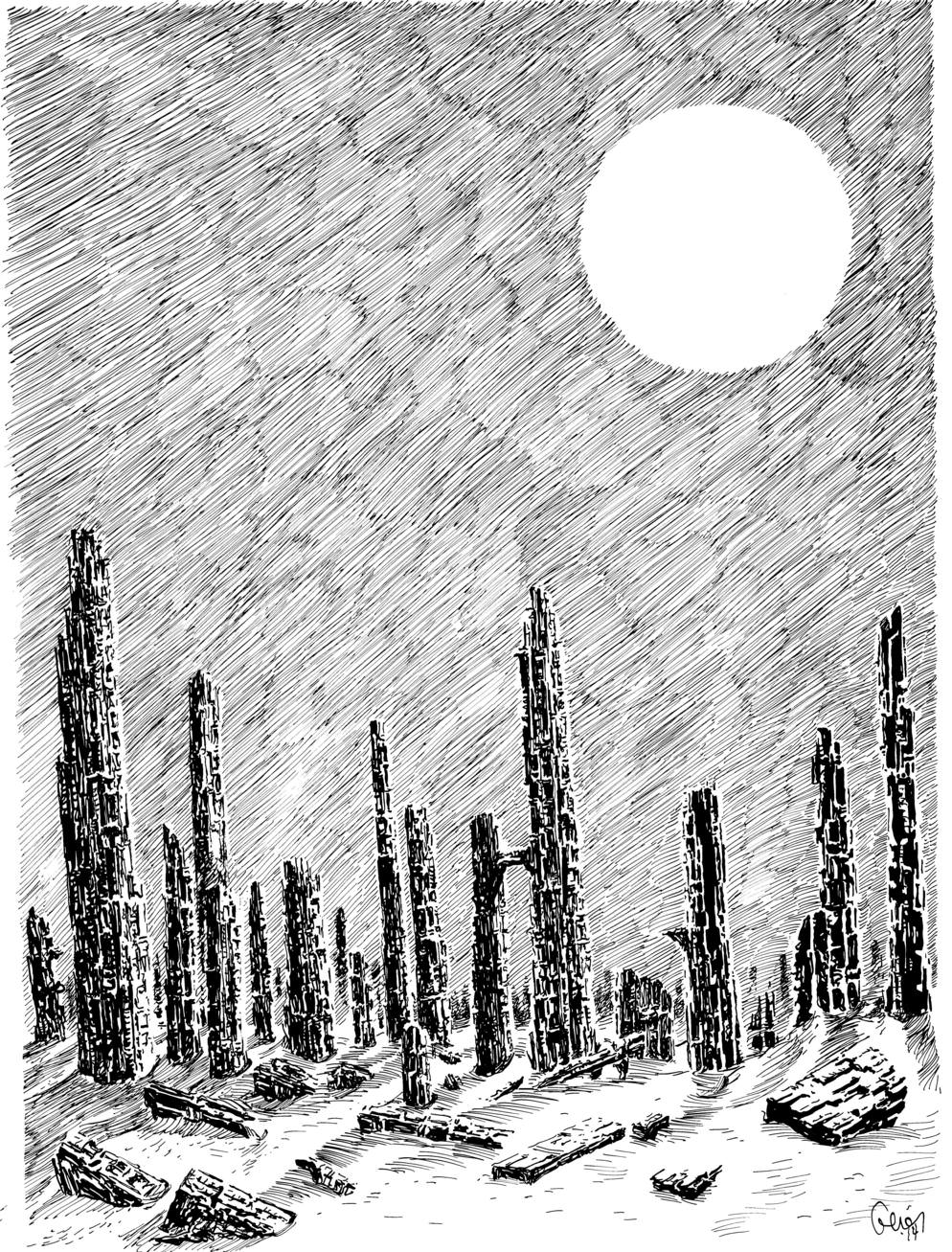
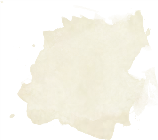


















Cannon- a Cannon uses gunpowder to properl heavy balls of cast iron through the air at destructive speeds. In a campaign without gunpowder, a cannon might be an arcane device built by clever gnomes or wizardly engineers. A cannon is usually supported in a wooden frame with wheels, but on a Spelljamming ship, it is mounted the same as every other siege weapon, on a 360° rotating turret.
In atmosphere near a planetoid, the Light Cannon has a 600/2,400 ft range, and the Heavy Cannon has a 1,200/4,800 ft range.
Alchemist's Fire Projector- This device shoots a thin stream of flaming, explosive liquid. Though it can be devastating in combat, the Alchemist's Fire Projectors are not popular with ships that cross between the spheres because of the flammability of the Flow. In fact, Alchemist's Fire projectors are recipes for disaster in the Phlogiston. They are popular, however among crews that do not leave their spheres.
In atmosphere near a planetoid, the Alchemist's Fire Projector has a 150/600 ft range.
Alchemist's Fire- While some adventuring parties know this substance as a thorw-able flask of sticky, adhesive fluid, aboard a Spelljamming ship it is generally stored in stone casks (for use as alternate ammunition in catapults). Alchemist's Fire ignites when exposed to air. When a cask is catapulted onto an enemy deck, the stone jug breaks and immediately explodes, dealing 3d10 fire damage in a 15-foot radius sphere. Any creatures in the sphere may make a DC 14 Dex saving throw. On a success, target suffers half damage. On a failure, creatures and any other objects in the sphere are now on fire. Also may ignite other jugs in burst radius.
Ram- Mounted to the front of ships, a Ram consists of nothing more than a heavy log, shod in iron. There are several different types that can be mounted to the front of Spelljamming ships. A ship can only have one type of Ram installed at a time.
- Piercing- A piercing ram is a long, sharp prow used to break open and break apart an enemy ship.
- Blunt- This is a flattened prow designed to inflict internal damage by shaking up the smaller ship.
- Grappling- The grappling ram incorporates one or more movable arms which attach themselves to an opponent's ship with suction cups or hooks after ramming, locking the ships together. This type of ram is very useful during boarding situations.
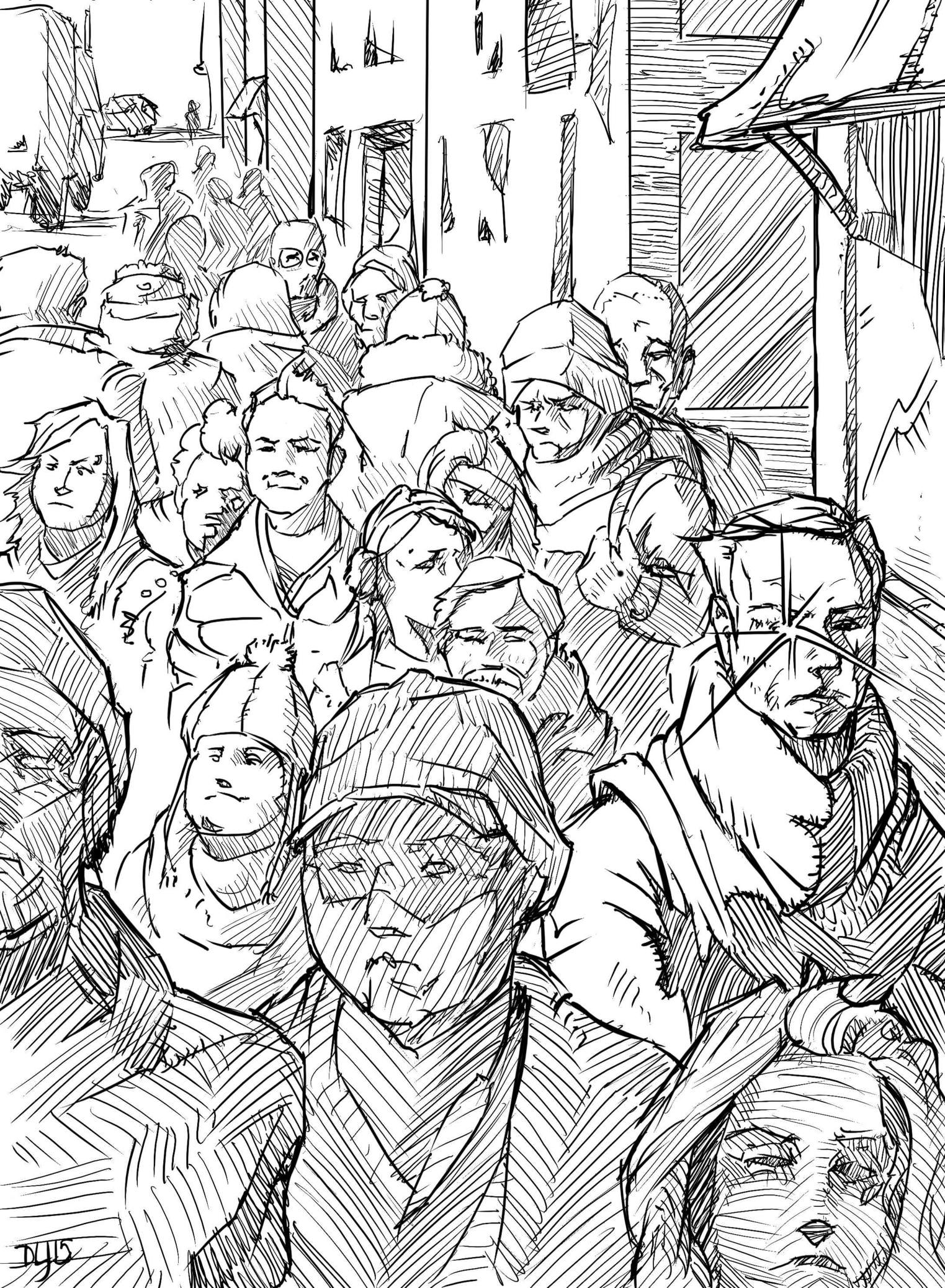


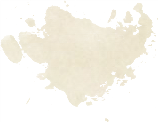



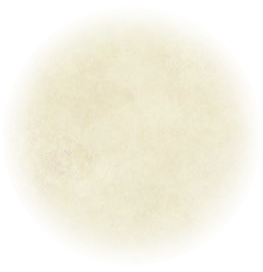





















The Crew
A good crew is the lifesblood of a sailing vessel. A ship cannot sail without a crew, and a crew cannot sail without a ship. They are interlinked, cosmically. The best crews will make voyages pleasent for you and terrible for your enemies. A Spelljamming ship sailing without a crew will will fly at half Speed, as the needed functions of turning the sails, operating the oars, or maintaining the ship itself will have to be done by the party members. All spelljamming ships have two crew numbers as listed in the chart on Spelljamming Ships and Equipment- The minimum needed to run the ship, and the max that the craft can hold without overloading it’s atmosphere. Crews are divided into three classifications: Green, Trained, and Crack. Standard costs per crew member per month are below:
- Green: 2 gp per standard month
- Trained: 4 gp per standard month
- Crack: 6 gp per standard month
Additionally, crews going into hazardous situations normally demand an extra share of plunder to be divided among the crew.
- Green sailors can be picked up everywhere. They are warm bodies to fill the ranks, clean the decks, and turn the sails.
- Trained sailors are veterans of many voyages, often on a number of ships. They are numerous, but that does not mean they are easy to find. Generally only about 3d10 trained sailors can be found for hire in any given larger city, and 1d10 smaller cities.
- Crack sailors are not so much rare as very specialized. They are the best at what they do for a particular First Mate and aboard a particular ship, almost psychically linked to the needs of the situation. Transplanting a Crack crew to a new ship reduces it to Trained status.
A Green crew attains Trained status after two months of travel (for example, two days of travel, a week hanging around a dock, and two more days of travel only add up to four days), including at least one trip to the Phlogiston.
A Trained crew grants advantage on any Persuasion or Intimidation checks made onboard the ship by any party member, and they may move to any part of the party's ship within one round. A Trained crew attains Crack status after two more months, including another trip to the Phlogiston, a battle with another ship or space creature of ship size or larger, and service under the same First Mate.
A Crack crew grants the proficiency bonus of the First Mate to ship initiative during Tactical combat and to ship Speed, as well as to attacks with all weapons attached to the party’s ship.
Crew members may be lost through travel in space. As long as at least 50% of the total crew stay alive between recruitment missions, crew status doesn’t change. Optional loyalty rules can be applied as listed in the Dungeon Masters Guide page 93.
Generally, unless the ship they are on is about to be destroyed, no crew member will stray far from the safety of the ship, even when moored at the most hospitable dock.
Some crew members may stick around through thick and thin and develop personalities and traits of their own. Feel free to give backgrounds (as listed in the Player Handbook), voices, and personalities to your crew to liven up your game.
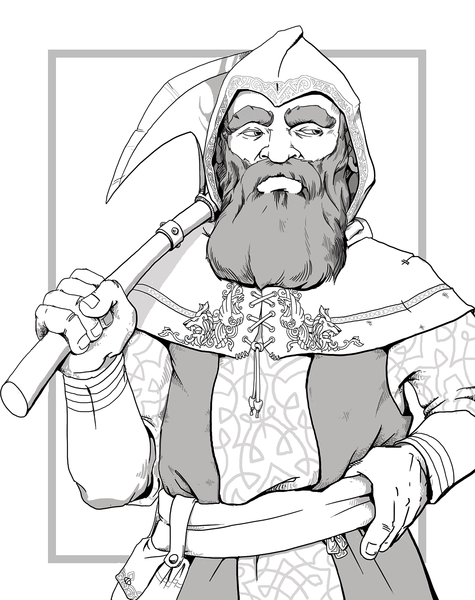

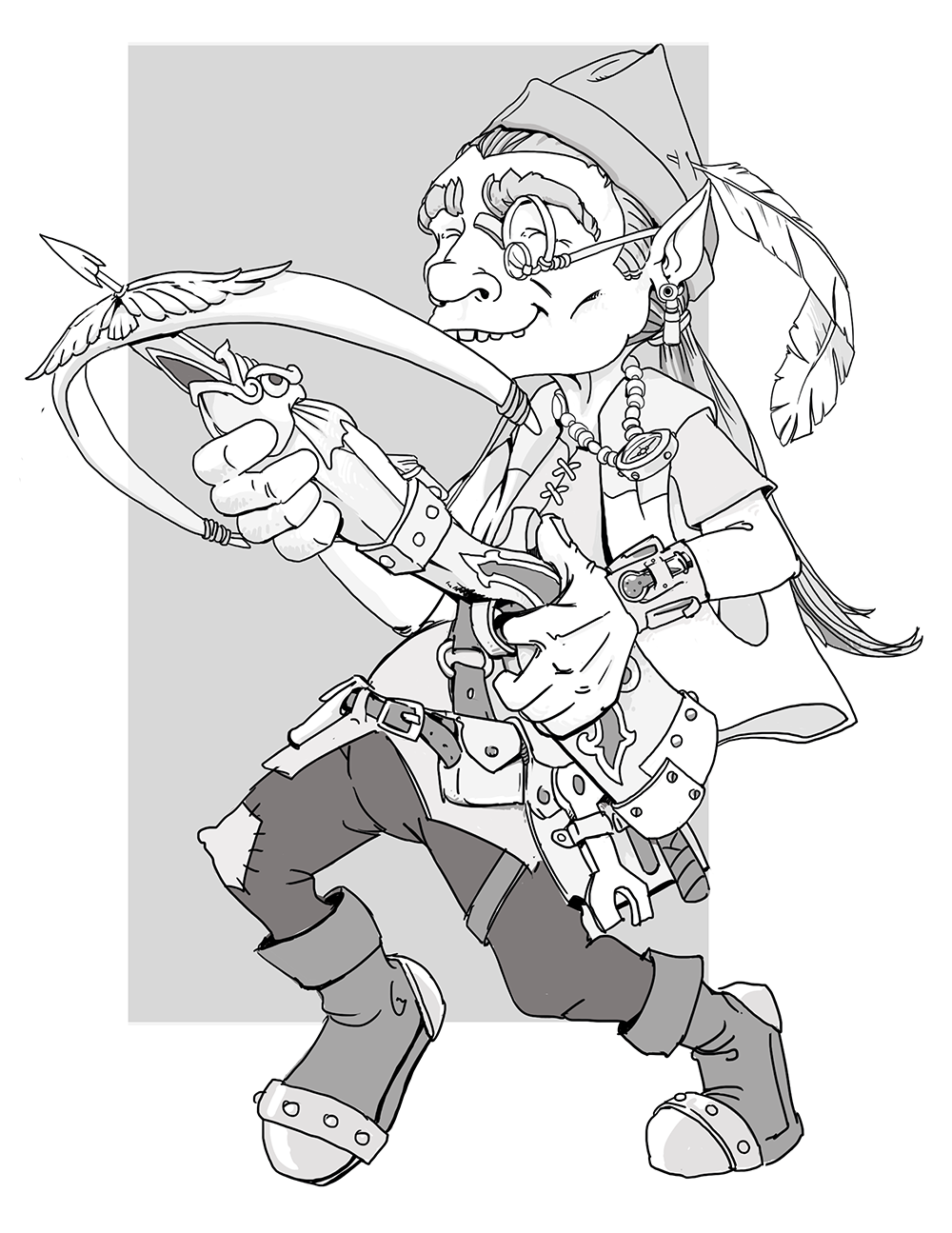

Basic Crew Statistics are listed below. You may find special crew members throughout Wildspace and beyond that may differ from the statistics listed here. There are many easy ways to customize the NPCs:
Racial Traits
You may add racial traits to a crew member. For example, a halfling crew might have a speed of 25 feet and the Lucky trait. Adding racial traits to any NPC doesn’t alter its challenge rating.
Armor and Weapon Swaps
You can upgrade or downgrade an NPC’s armor and weapons. Adjustments to Armor Class and damage may change an NPC’s challenge rating.
Green Crew
Medium Humanoid (any race), any alignment
Armor Class 10
Hit Points 4 (1d8)
Speed 30 ft.
| STR | DEX | CON | INT | WIS | CHA |
|---|---|---|---|---|---|
| 10 (+0) | 10 (+0) | 10 (+0) | 10 (+0) | 10 (+0) | 10 (+0) |
Senses passive Perception 10
Languages any one language (usually Common)
Challenge 0 (10 XP)
Actions
Club Melee Weapon Attack: +2 to hit, reach 5 ft., one target. Hit: 2 (1d4) bludgeoning damage.
Trained/Crack Crew
Medium Humanoid (any race), any alignment
Armor Class 12
Hit Points 11 (2d8 + 2)
Speed 30 ft.
| STR | DEX | CON | INT | WIS | CHA |
|---|---|---|---|---|---|
| 11 (+0) | 12 (+0) | 12 (+0) | 10 (+0) | 10 (+0) | 10 (+0) |
Senses passive Perception 10
Languages any one language (usually Common)
Challenge 1/8 (25 XP)
Actions
- Scimitar. Melee Weapon Attack: +3 to hit, reach 5 ft., one target Hit: 4 (1d6 + 1) slashing damage.
- Light Crossbow. Ranged Weapon Attack: +3 to hit, range 80 ft./320 ft., one target Hit: 5 (1d8 + 1) piercing damage.

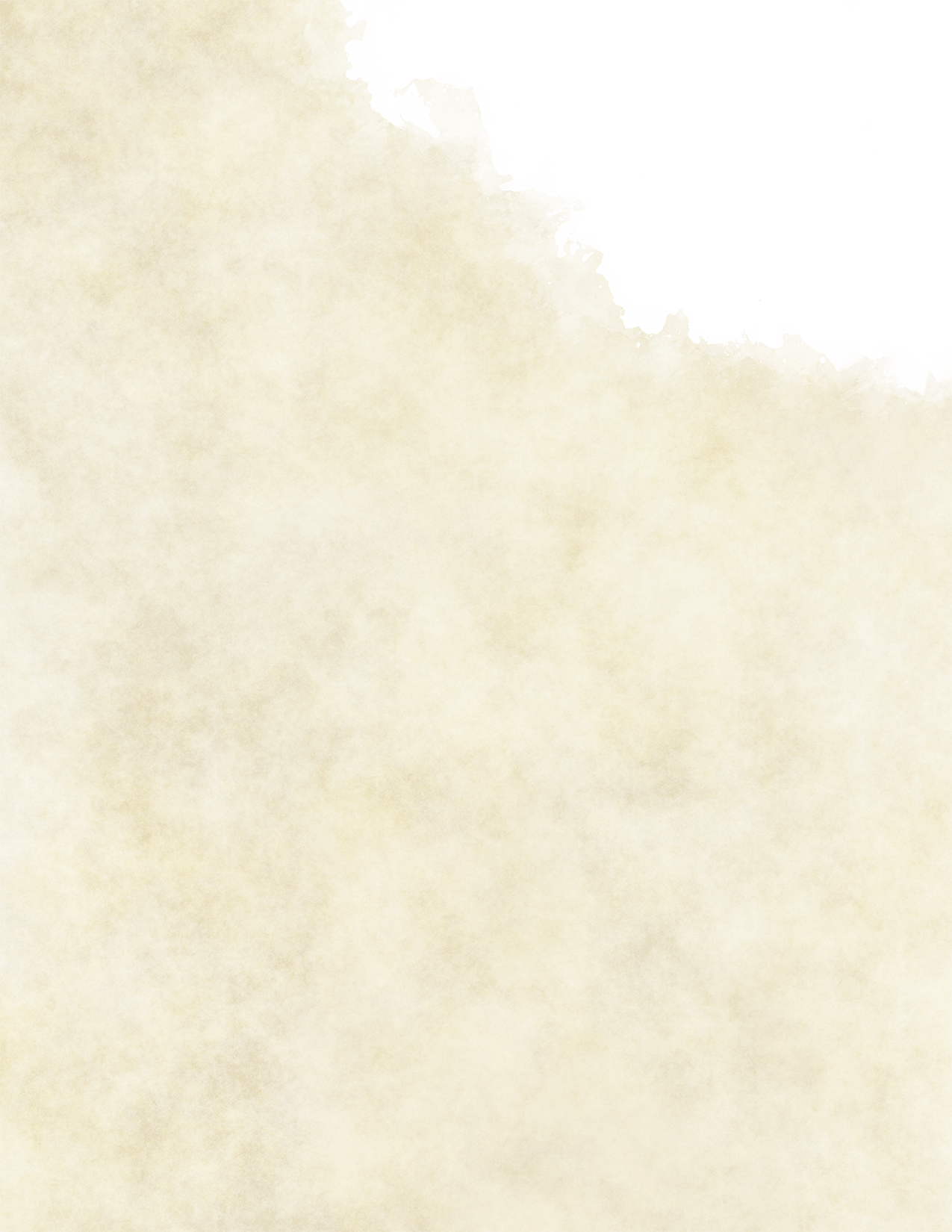
Roles on the Ship
Who does what aboard a sailing vessel, and when? What kind of jobs are available aboard beyond the able-bodied sailor? This chapter will give a brief look into the roles on a Spelljamming vessel. It is advised to establish a Station for everyone aboard the ship to keep the troops in line and the decks swabbed. In case of trouble, everyone knows their job and what to do. Players are strongly encouraged to pick a ship role.
Stations
On a Spelljamming ship, various Stations exist that can be filled by a player at your table. Some positions may overlap (The Magic Officer and Engineer could be the same person, for example) as an adventuring party may not be large enough to accommodate all positions. Additionally, multiple party members may fill the same role if they wish.
Engineer
The Engineer takes care of the repair and fitting out of the vessel, and examines whether it is sufficiently provided with ropes, pulleys, sails, and all the other rigging that is necessary for a voyage. When fires erupt on-board, the Engineer is the one to call.
First Mate
The force of personality necessary to hold together an unruly bunch of scallywags, the First Mate handles the crew in the best of times and the worst of times. A First Mate's duties include overseeing all aspects of the crew, envoys, cargo, and passengers.
Gunner
The Gunner is in charge of maintaining and firing the weapons systems and ammunition aboard a Spelljamming ship. This included sifting the powder to keep it dry, ensuring the cannons and ordnance were kept free of rust, and that all weapons were kept in good repair. A knowledgeable Gunner was essential to the crew's safety and effective use of their weapons.
Helmsman
The Helmsman is in charge of navigating the ship through spaces unknown. This officer is, more often than not, the most able-bodied mage aboard a Spelljamming ship.
Magic Officer
While the Helmsman is in charge of the day-to-day sailing of a vessel, the Magic Officer directs the course and looks after the maps, instruments necessary for navigation, and messages to other ships and docks. Though it's not required to know any magic to be a Magic Officer, often this position also exists as a Second for the Helmsman.
Surgeon
The Surgeon has the distinct priviledge of keeping everyone alive and healthy aboard the ship. More often than not, the Surgeon performs operations and amputations with the same tools that the Engineer uses to repair the ship.
You'll notice that there is no Captain aboard a Spelljamming vessel. In fact, this note is the only place where the word Captain even exists in this document. The idea for Ship Roles are to be a sort-of opposite of a "Chain-of-Command". This is to provide ease of docking, bureaucracy for various starfaring kingdoms (for RP purposes), and that players and NPC's played by the DM have those points to move the story forward at a reasonable pace.
If a player or DM "gives orders" to the other players, or if any one person has advantage over another person in either the game or real life, the DM is strongly encouraged to step in; Likewise for the players.
NPC's should never have the ability to take the place of a player aboard a vessel and do not have a vote in matters. All members of the adventuring party should get an equal vote. The idea here is to keep player agency for The Party's Ship, and not The Captain's Ship.
We are all equal at this round table.
That being said, if your group is okay with having an official "Captain" role, you can replace the "First Mate" ship role with the "Captain" ship role, which has the same abilities.
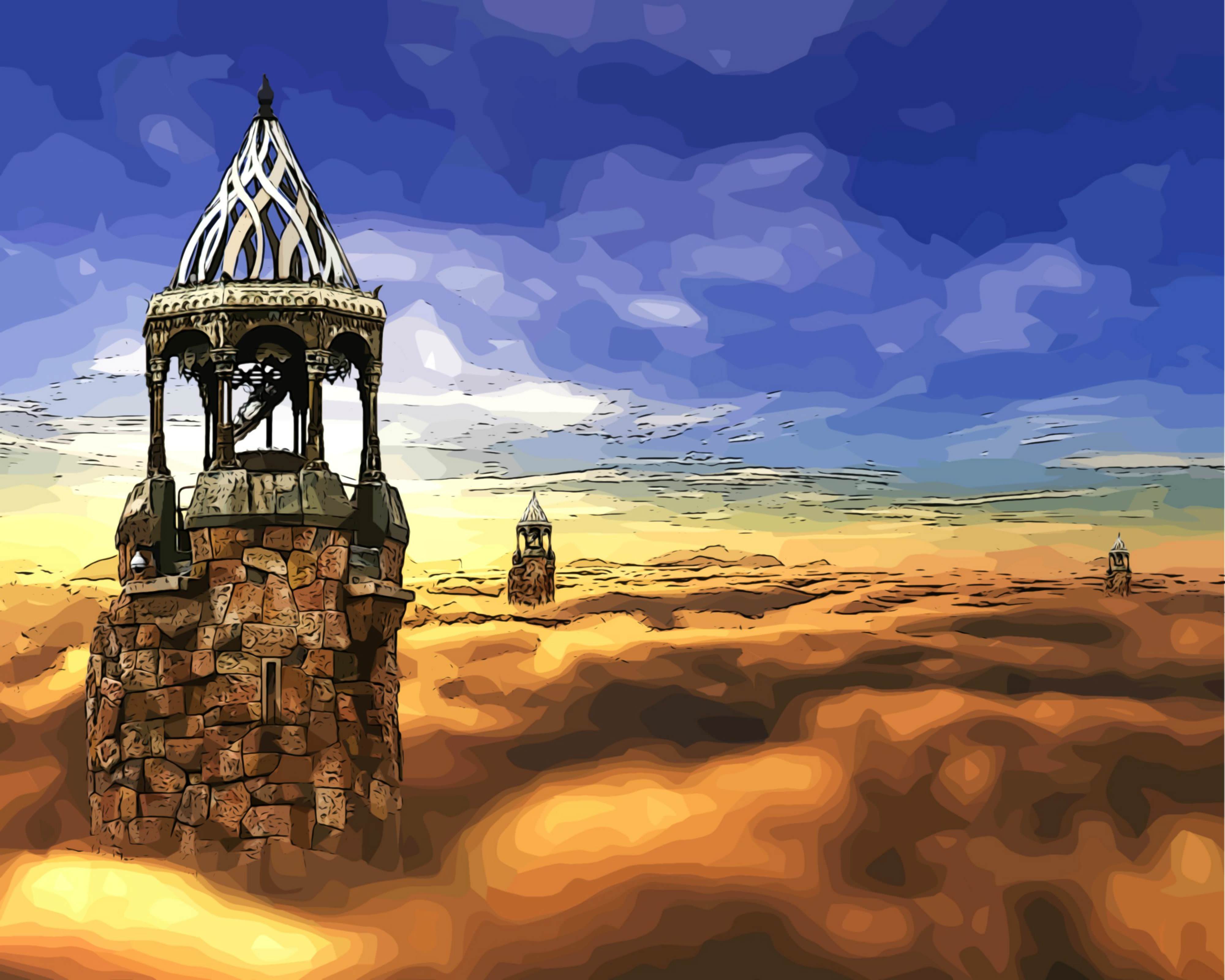

Movement in Space
Every ship in motion has a Speed, which is the distance that the ship can move in a given period of time. On a hex space (hexagonal spaced) grid, each ship takes up one hex space, which refers not to the size of the ship itself, but the size of the sky it controls. Hex spaces do not take up a specific distance, but are rather more about the story being told in the theatre of the mind.
Your ship Speed is determined by the MR of the ship itself and your Helm Rating, using the formula below:
Speed = Helm Rating + MR of Ship
In Combat and other tactical scenarios, the speed of the ship is the number of hex spaces it can move per round and/or the number of hex facings it can change.
Out of Combat and other tactical scenarios, A Spelljamming ship is outstandingly fast; even a mountain transplanted from a celestial body (with a Spelljamming Helm installed) will travel 100,000,000 miles per day (about 4 million miles per hour) in Wildspace regardless of ship Speed. 100 million miles per 24 hour day sounds like a lot (it’s approx. the distance from the Earth to the Sun) but Wildspace is unbelievably large and that same ship would take 36 days to reach Pluto from the Earth. A Crystal Shell is as far from the orbit of the furthest planetary body as it is to the primary star. The Crystal Shell housing Earth’s planetary system would take 72 days to reach from the center, and vice versa.
What slows movement among more crowded inner planets is the presence of multiple, occasionally overlapping, Gravity Wells. When a ship moves to the Gravity Well of a large body (10 tons or greater), or when Tactical Combat is detected automatically by the Helm, it immediately drops to tactical speed of one hex per Speed per round until it has left the planets Gravity Well, or combat is concluded. A ship caught this way can descend to the surface, move around in the atmosphere, leave the area, or proceed with combat. Aside from the most basic awareness change, the “sudden stop” does not affect anyone on the ship, and the safety appears to be built in to the magic of the Helm itself.
On average in the gravity well of a planetoid, this translates into about 10 miles per hour or about 240 miles per day.
Tactical scenarios near a large body move this way due to the close interaction with a planetoids atmosphere, gravity well, and weather conditions.
Ships move on a hex grid, and movement is determined by Speed. Optionally, you may have ships move on a square grid (with 8 facings (ie. the corners and sides of a square), but these rules are designed for hex-based combat. If using a square grid, you may add 1 to the overall Speed of all ships to account for the extra facings that need to be made.
The Speed of your ship is the number of facings that the ship can change and/or hex spaces it is able to move per round of combat. Facing a different direction in the hex space you're in, or moving one hex space forward uses one Speed. You deduct one Speed to turn the ship towards a different hex side adjacent to the port or starboard (left or right) of the current bow (front) position of the ship. You may also spend one Speed to move forward into the hex space adjacent to the current hex space where your ship resides and faces.
For example: The Monarch, a Tradesman ship, has a Speed of 8. The Helmsman piloting The Monarch wishes to move away from an oncoming ramming attack directly from the bow (front) by an enemy Mindspider vessel. The Helmsman spends two Speed to turn the ship to the starboard-side (right) two facings of the hex that it currently resides in. The ballista onboard The Monarch are ordered by the Gunner to be fired at the oncoming Mindspider, scoring a direct hit! The Helmsman then urges the ship forward four hex spaces in the direction that the ship is now facing, spending four Speed. A single Speed is then spent to turn port-ways (left) one hex facing, and the ship uses its' last Speed for the turn with a move forward one hex, readying for the next round.
Any ship without a Helmsman, a broken vessel, or any errant detritius floating about in the area moves at a constant speed in one direction across the battlefield using it's last known speed. Be wary, as brigands and other ne'er-do-wells may be hiding just beyond a floating piece of space junk, laying in wait. . .

Time in Space
In general, time between two planetary bodies can be figured as:
- Time for take off (in rounds) +
- Time to escape gravity well (in rounds) +
- Time to cover distance to next planet (rounds, minutes, days, weeks, or months, as appropriate) +
- Time to land (in rounds)
Travel Time
Travel time between the various planetary bodies is taken into consideration, as there is only so much air that the ship can bring with it. For ease of relaying travel information, planetary motion isn't a major factor determining travel times and positions of each planet. Listed below is an example for average travel time from Earth to the various other planetary bodies in our solar system:
| Planet | Mercury | Venus | Mars | Jupiter | Saturn | Uranus | Neptune |
|---|---|---|---|---|---|---|---|
| Earth | 13h | 6h | 12h | 3.9d | 8.0d | 16.9d | 27.0d |
For more information on how a universe is laid out and created, as well as optional rules, see the chapter on Celestial Mechanics.
Takeoff & Landing
When taking off from a planetary body, a certain amount of time is required to allow the Helm to overcome the force of normal gravity and fully leave the planets’ gravity well. The amount of time it takes to leave the planets’ Gravity Well are listed below:
- Size A, B, & C – Ten minutes
- Size D, E, & F – Twenty minutes
Once a planets Gravity Well has been left, full movement at Spelljamming speed can begin. Temporary ships (Those that have been cobbled together from broken vessels), cannot make a takeoff or landing safely and will Crash, completely destroying the vessel.
Optionally, you may refer to the weather rules in the Dungeon Masters Guide, pages 109-111 and 117-119.
- In None and Light wind conditions, Normal takeoff and Land times occur.
- In Strong Wind, Light Rain, or Light Snow, takeoff and land times are 2x normal time.
- In Heavy Wind, Heavy Rain, or Heavy Snow, takeoff and land times are 4x normal time.
- In Hurricane winds, no safe takeoff or landing is possible. If forced, roll 1d10. On a 1 or 2, ship crashes and must be repaired before travel can resume.
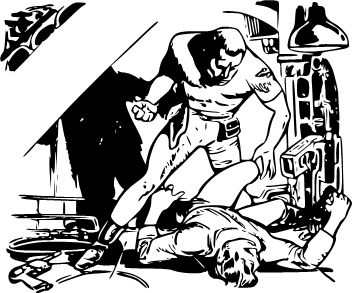
Ship Combat
There are times when diplomacy comes to an end, and conflict begins. Most groundlings fight hand-to-hand with sword, shield, and magic; horse, army, and castle. This is not so in the depths of space, as there's no field in the field-of-battle, just airless void and the ships you see before you. Siege weaponry has adapted quite well to the depths of space, and is used quite effectively.
At the beginning of combat, you roll initiative for each ship rather than each party member. Ship initiative is modified by the initiative of the character at the Helm, and any addition that the crew provides. If combat becomes hand-to-hand, roll for character initiative. A combat round lasts 1 minute (60 seconds) in ship-to-ship tactical combat. Hand-to-hand combat rounds last 6 seconds.
Some victors of extraplantary combat will sift through the debris of broken ships for prisoners, slaves, and loot, while others will abandon them. It’s possible for survivors to lash up some of the vessel to create a Temporary ship to save themselves with a Helm and air pocket, but they must act quickly!
Ship Actions
During your ships turn, each character may perform one Ship Action pertaining to their role on the ship. After Ship Actions are resolved, each character may take one normal round of actions. If a character does not select a ship role, they may only take one normal round of combat actions. You may use your turn to buff your allies, your ship, prepare for boarding, .
Ship Actions are declared at the beginning of the combat round, before individual combat actions, and take place simultaneously - If a ship doesn't have enough members to crew the siege weapons and repair damage, while also repelling invaders, then priorities will have to be decided. If no decision can be made, then nothing happens.
After Ship Actions are determined and executed, then each character may take one individual turn. Many ship actions are listed below for each station on a ship, but this is not an exhaustive list. Players are encouraged to think outside of the proverbial box and come up with new and unique solutions. DM's are encouraged to give leeway within reason.
The rule is that if a player can perform the action and explain how their described Ship Action would help the ship, crew, or situation in any way, and would reasonably take under 60 seconds, it can be considered their Ship Action for the turn.
Ship Actions and who may use them are including, but not limited to:
The First Mate
may order crew to specific spots on the ship to attack or defend in hand-to-hand combat, or to avoid incoming attacks. Instead of ordering crew to specific stations, the First Mate may Encouage or Threaten.
- Encourage or Threaten
The First Mate gives a short speech to a specific group of crew members already assigned to a task (such as the crew assigned to one siege weapon, or the crew assigned to repairing damage in a specific area). This functions as having used the Help action for each member of that specific group, and lasts until the beginning of the next turn.
The Magic Officer
may view any maps or activate other devices that the ship has installed on-board to identify threats or escape routes, target foes, and navigate hazards. The Magic Officer may instead make a Spyglass action.
-
Spyglass
The Magic Officer scans the enemy vessel to obtain one piece of information:- Basic Information: Visible crew on the deck, size, and information about any flags or other pieces displayed by the vessel. A PC may need to roll an associated ability check to discern meaning out of their observation.
- Defenses: Tonnage, ship type, and current Hull Points (described in a general sense), or information about one weapon.
-
Hail!
Through a series of flags, lights, or other means, the Magic Officer may attempt to hail or send any message to the oncoming vessel that could be sent in one minute.

The Helmsman
may move the vessel up to the ships Speed. Additionaly, the Helmsman may initiate one Stunt.
In addition to ordinary movement, a Helmsman can attempt Stunts with her ship. Several stunts affect your starship’s Armor Class (AC), siege weapon attacks, and Movement abilities. Listed below are several stunts that can be performed by all Helmsman, using properties of the helm.
-
Ramming
The Helmsman may Ram another ship. Ships equipped with rams can inflict massive amounts of damage. When ramming, the attack modifier used is that of the Helmsman’s spell attack bonus. If a hit is scored, damage is equal to the damage of the ram. Ships which attempt to Ram vessels more than twice their size in tonnage Crash instead. The ship must move in a straight line at least three consecutive hex spaces to perform a Ramming Ship Action. -
Shearing
The Helmsman may Shear another ship. Ships equipped with rams may attempt to shear away the rigging of the opposing vessels. This is treated as a ram attack, except no damage is done to the opposing ship. Instead, for each successful shear attack, rigging, ships weapons, and even crew can be targeted. The ship must move in a straight line at least three consecutive hex spaces to perform a Shearing Ship Action. -
Crash
A truly desperate move, a Helmsman may intentionally crash her ship into the opposing vessel, creature, or planetary body. To crash into another vessel or creature, treat this attack as a Ramming action. On a hit, deal 5d10 damage to both ships. A successful Crash will cause immediate Spelljammer Shock Critical Hit to the Helmsman initiating this action, and the target ship. -
Tactical Regroup
- Major or Minor Helm - Expend One Level 1 (or higher) Spell Slot
- Lifejammer - Deal 1d8 Psychic damage to all Helmsman
- Major or Minor Helm - Expend One Level 1 (or higher) Spell Slot
The ship moves up to half its speed in the direction of the aft (rear) edge without changing hex facing. This action does not count towards the overall movement of the ship that turn, and uses no Speed.
\columnbreak
- Barrel Roll
- Major or Minor Helm - Expend Two Level 2 (or higher) Spell Slots
- Lifejammer - Deal 2d8 Psychic damage to all Helmsman
- Major or Minor Helm - Expend Two Level 2 (or higher) Spell Slots
The vessel moves up to half its Speed and flips along its central axis. Until your next turn, attacks made against your ship are made at disadvantage.
- Hard Turn
- Major or Minor Helm - Expend Two Level 2 (or higher) Spell Slots
- Lifejammer - Deal 2d8 Psychic damage to all Helmsman
- Major or Minor Helm - Expend Two Level 2 (or higher) Spell Slots
The ship moves forward up to half its Speed (without turning) and rotates 180 degrees to face the aft hex side at the end of the movement. This does not count toward Speed spent during the round.
- Turn in Place
- Major or Minor Helm - Expend Two Level 2 (or higher) Spell Slots
- Lifejammer - Deal 2d8 Psychic damage to all Helmsman
- Major or Minor Helm - Expend Two Level 2 (or higher) Spell Slots
The ship does not move forward but instead can turn to face any direction. This does not count toward Speed spent during the round.
- Catch the Wind
- Major or Minor Helm - Expend Three Level 2 (or higher) Spell Slots
- Lifejammer - Deal 3d8 Psychic damage to all Helmsman
- Major or Minor Helm - Expend Three Level 2 (or higher) Spell Slots
The ship moves forward one and a half times it's total Speed. The ship may not use any of this movement to change hex facings. The ship may not spend Speed to move during the round. If the ship has already moved, then this Stunt cannot be used.
- Flyby
- Major or Minor Helm - Expend Three Level 2 (or higher) Spell Slots
- Lifejammer - Deal 2d8 Psychic damage to all Helmsman
- Major or Minor Helm - Expend Three Level 2 (or higher) Spell Slots
The ship moves as normal, but may move through 1 hex threatened by an enemy ship or creature without provoking an attack of opportunity.
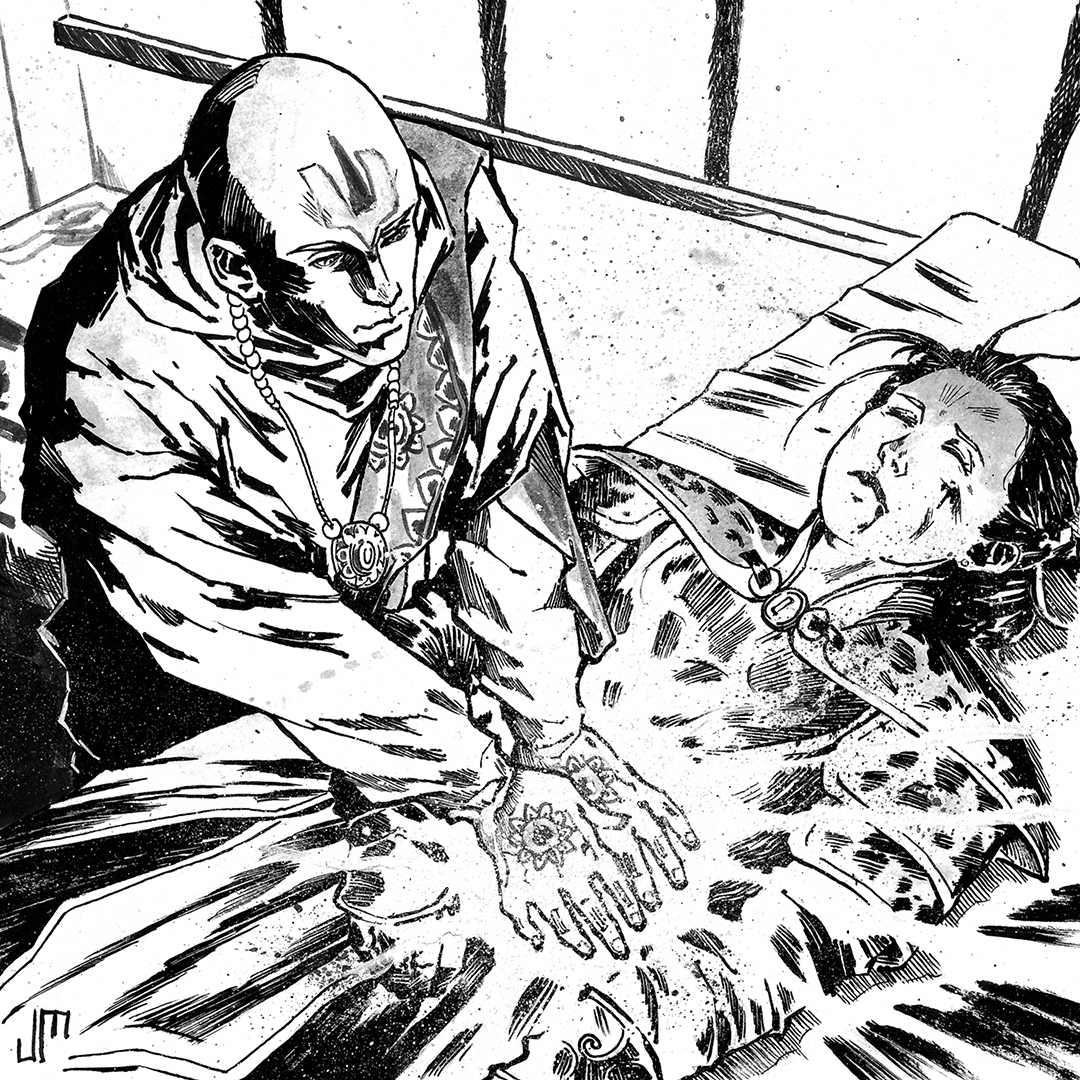

The Gunner
may order crew to the siege weapons systems onboard to fire at enemy vessel(s). The Gunner may Fire Ship Weapons, Fire at Will, or Grapple.
-
Firing Ship weapons
Weapons have “ranges” which are really the MR of their projectile. For example, the maximum range of a light catapult is 1,200 feet each round until it hits something or goes off into infinity. In planetary atmospheres the range is reduced to normal planetary ranges. A siege weapon attack includes loading and aiming the weapon. All siege weapons are mounted on rotating turrets. -
Fire at Will
The Gunner commands the crew to fire all siege weapons on-board at all enemy vessels. One attack is made per siege weapon, per target. These attacks are made at disadvantage. -
Grappling
This is a contested roll; Both ships participating in the grapple are required to roll 1d20 + Ship Speed. Degrappling is automatic if both vessels desire it, otherwise it’s resolved as a standard grappling roll. See Grappling on page 195 of the Players Handbook. Can only be used when targets are within one adjacent hex.
The Surgeon
may perform Medicine checks to diagnose wounds or diseases, create healing potions using an Herbalism Kit, administer healing potions to one group of crew members (such as the crew assigned to one siege weapon, or the crew assigned to repairing damage in a specific area), or cast healing spells. Additionally, the Surgeon may Mass Stabilize.
- Mass Stabilize
When this action is selected by the Surgeon during the Ship Action phase, you may stabilize any number of creatures on board that have been brought to zero. Those creatures remain in unconscious condition at 1 HP, and are prone.
The Engineer
may order crew to repair damage to the vessel or it's weapons, put out fires, perform repairs herself, or cast spells that repair or bolster the defences of the ship. Additionally, the Engineer may perform a Brace for Impact and Douse Flames.
-
Brace for Impact
When this action is selected by the Engineer during the Ship Action phase, any rolls on the Critical Hits table that target your ship are negated until the beginning of your ships next turn. -
Dourse Flames
The Engineer triggers the flame retardent systems aboard the vessel. This Ship Action douses all flame aboard the ship including torces, candles, fires from explosions, and flame created by the Fire! Critical Hit.
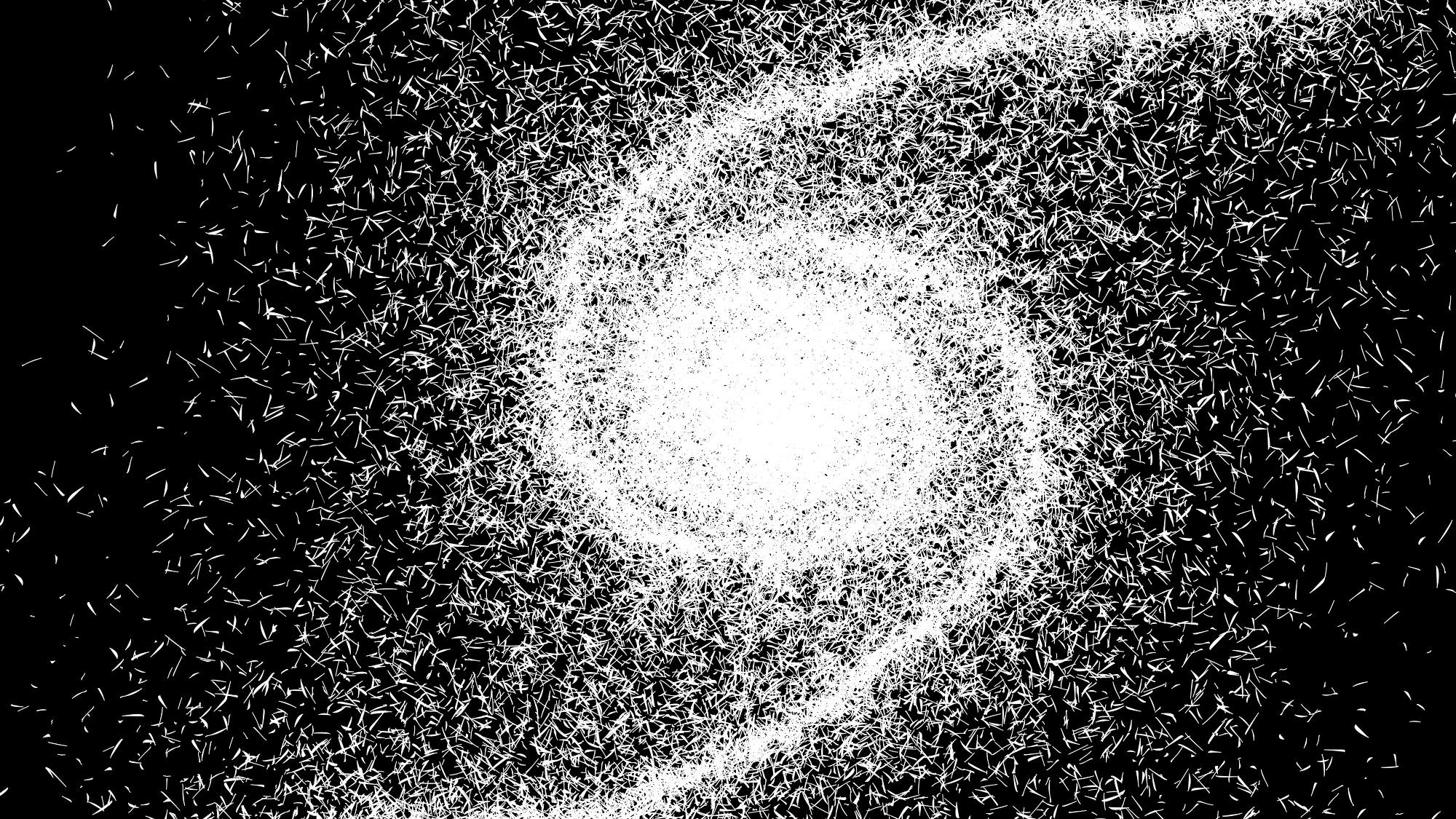


Critical Hits
Crewed siege weapons often have a chance of inflicting a Critical Hit to enemy vessels. Other events (Ramming, Spells, Crashing, turbulence from terrestrial or solar winds, etc) may also cause a Critical Hit. When a vessel is reduced to 50% of its Hull Points, it suffers a Critical Hit. When you score a critical hit, instead of rolling additional dice, you will roll on the following table:
Critical Hit Table
| d10 Roll | Effect |
|---|---|
| 1 | Fire! |
| 2 | Ship Shaken! |
| 3 | Hull Holed! |
| 4 | Temp -1d4 Speed loss for 1d4 rounds |
| 5 | Random Ship Weapon Damaged |
| 6 | Deck crew Damage! |
| 7 | Interior crew Damage! |
| 8 | Temp -1d4 Speed loss for 1d4 rounds |
| 9 | Fire! |
| 10 | Spelljammer Shock! |
Fire!- A fire starts somewhere in the ship, determined by the DM. If a fire is unable to start (all lights are magical, there is nothing flammable onboard, etc) then roll again.
Ship Shaken- All PC’s not otherwise secured (Helmsman is considered secured) must make a DC 13 Dexterity saving throw or be knocked prone.
Hull Holed- The attack punches a sizable hole in the ship. DM decides location. If five total Hull Holed Critial Hits are scored on any vessel of 50 tonnes or less, it's internal structure is destroyed and the vessel starts to break apart. For vessels larger than 50 tonnes, the number of Hull Holed Critical Hits needed to break apart a vessel is 1 per 10 tonnes of the ship.
Deck crew Damage- One exposed creature is struck and suffers either the same damage as the ship or 2d10, whichever is higher. Choose the target randomly from all aboard the deck. All creatures within 5ft of that individual must make a DC 10 Dexterity saving throw or suffer the same damage.
Interior crew Damage- Same as a Deck crew Damage Critial Hit, but everyone not on deck is a potential target, including prisoners and Helmsman. This reflects not so much the missle itself, but shattered parts of the ship bouncing around during combat.
Ship weapon damaged- One ship weapon (chosen randomly) is damaged and inoperable until repaired. Duration of repair is 1d4 rounds. Any crew on the weapon is unharmed. If no weapons exist on-board the ship, roll again.
Speed Loss- The ship drops by the specified speed for 1d4 rounds (min 1). If a ship is already at Speed 1, then roll again.
Spelljammer Shock- The spelljamming Helmsman must make a Concentration Check (PHB p.203). If no damage was dealt to bring about a Critical Hit roll, then the DC is 10. If the Helmsman fails this check, they lose concentration and are unable to pilot the ship for 1d4 rounds, after which they are free to pilot again. In the case of multiple Helmsman, they all must make the save. In the case of Foundries, Artifurnaces, or other drives not using a Helmsman, the drive itself is rendered nonfunctional for 1d4 days while being repaired. If no replacement is available, the ship immediately becomes Speed 0 and can only move in a straight line at it’s present speed.
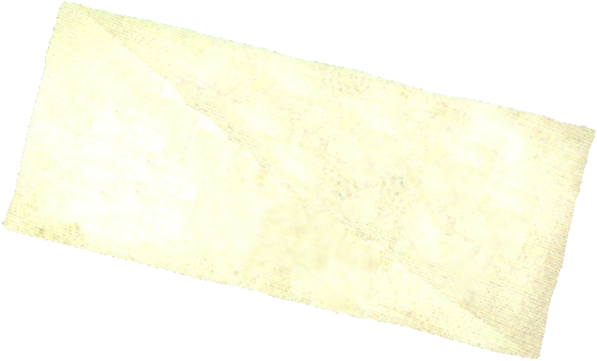
When ships to sail the void between the stars have been invented there will also be men who come forward to sail those ships.
—Johannes Kepler
Gravity
The reason everything drags its own atmosphere around through space is gravity. This is also the reason why people can stand on a space sailing ship without falling off its deck and can stand on a spherical planet without falling off the bottom side. Every body in space has its own gravity. Gravity is an accommodating force in that its direction seems to be "that which is most convenient." In an object the size of a planet, gravity is directed toward a point at the center of the sphere so that people can stand anywhere on the surface, and dropped objects fall perpendicular to the surface. In smaller objects, like spacecraft, gravity is not a central point but rather a plane which cuts horizontally through the object to the end of the air envelope. Gravity itself is conveniently an all-or-nothing proposition. Either it is there at full strength or it is not there at all (though there are exceptions to every rule, per DM discretion).
Significantly, this gravity plane is two-directional; it attracts from both top and bottom. A sailor can actually stand on the bottom of the ship's hull and move around as easily as if she was walking on deck. In this case, what was "down" on the deck is actually "up", back toward the plane of gravity that cuts through the ship. One of the stranger side effects of all this is that an object falling off the side of a Spelljammer can oscillate back and forth across the plane of gravity, falling first in one direction until it crosses the plane, then reversing direction and falling back across the plane again, and so on until something causes it to stop. To a person standing on the deck, the object appears to fall down, then up, then down, then up, and so forth.
This trick is commonly used to amuse passengers new to space travel. More than one groundling has gotten in trouble for standing at the ship's rail and tossing an endless stream of apples overboard just to watch them bob.
Along the plane an object is weightless, but it is slowly pushed out toward the edge of the gravity field. Therefore, a creature that falls overboard that couldn't find a hold or isn't tied down, would eventually come to rest at the ship's plane of gravity, and would then begin drifting away from the ship along that plane toward the edge of the air envelope. On reaching the end of the gravity plane (at the very edge of the air envelope) she is pushed out and left behind as the ship moves away. This movement takes place at a rate of 5 feet per round. Aside from this slight push, there is no relative motion of a ship within its air envelope, aside from turning. A ships air envelop does not turn with the ship when it turns, but objects in the ships air envelope do not drift toward the rear of the ship simply because the ship is moving forward.
When gravity planes intersect (such as when two ships pass each other, or when a ship passes a planetoid), the gravities of both ships remain in effect, regardless of size, up to the point where they physically intersect. An object is under the influence of whichever gravity plane it is closest to. A character could leap between two passing ships, altering her down direction as she crosses the midpoint between the two.
When two ships come into direct contact, the gravity of the ship with the higher tonnage is dominant and becomes the gravity for both ships. A large mind flayer vessel could ram a smaller ship from directly above and spin the smaller ship's gravity plane by 90 degrees, causing everything on the rammed ship to tumble toward the large ship's plane of gravity, probably with disasterous results.
A weightless character who enters the air envelope of a larger body is immediately affected by the pull of gravity on that body. She effectively falls the distance from where she entered to the surface of the body or to the gravity plane, whichever is closer. Normal falling damage is applied, as well as massive damage rules. When the drop is more than one mile, there is also danger of the subject heating up and igniting from friction with the air. This happens after one mile of uncontorlled descent. The falling object catches fire and takes normal damage from fire as well as falling damage. Any sort of control over speed and descent (flight, levitation, feather fall, etc) negates this effect.
Characters who are weightless can move under familiar laws of physics - For every action, there is an equal and opposite reaction. A drifting fighter may move by throwing her equpiment in the opposite direction. Max movement is half-speed when acting this way. Combat in a weightless environment is difficult and foreign to creatures used to fighting in normal environments, and any attack roll or saving throw using STR, DEX, or CON is made at disadvantage.
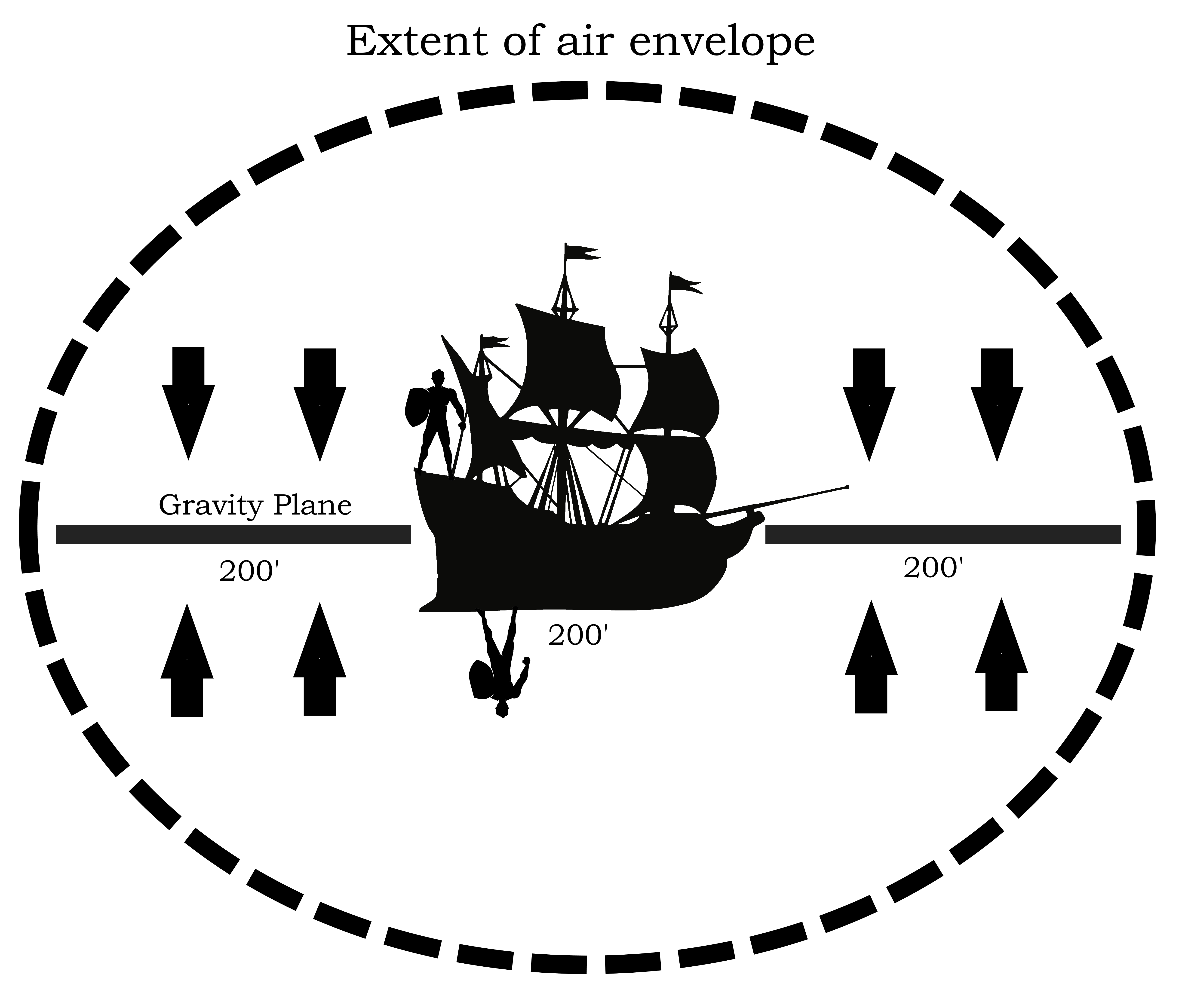



Air in Space
All objects drag air with them whenever they leave an air envelope. While important, air is relatively easy to replenish. Entering a larger air envelope like that of a planet or asteroid is one of the most popular and cheapest methods. Green plants will refresh air, and some vessels make great use of these for just this purpose. Many asteroid colonies keep at least half their surface area reserved for plants for this reason.
Air around a ship remains fresh for eight months with 50% of the max crew or less. With 51% - 100% of the max crew, air lasts for four months. 101% - 150% of the max crew, and air lasts for three months. 151% - 200% of the max crew, and air lasts for 2 months. More than double the crew cannot fit on a ship, due to sleeping and space requirements. Air cannot be extended by losing crew members mid-travel, but can be shortened by adding crew members mid-travel.
For example: A 30 ton frigate sets sail with 30 crew aboard (including the party), the maximum crew size for that vessel. It has air sufficient for four months. After a week in space, 16 crew members are lost in a large space battle, making total crew of 14. Even though this represents less than 50% of the max crew, it has no effect on air supply because air supply can’t be extended mid-travel. Two weeks later, if the same 30-ton frigate rescues 34 characters from a drifting hulk of a vessel, bound together and limping along. This raises current crew to 50. This bring the total crew count greater than the max of 30. Air supply is reduced to three months, so the air will gain the fouled condition at the end of three months in space.
Any lone Medium-sized creatures in Wildspace or the Phlogiston drags along with it enough air to last 5 minutes. Large-sized creatures (ogres and giants, for example) drag along enough air to last 10 minutes. If a medium-sized creature is standing on a rock 100 cubic yards in size it may have enough air to survive several months, but food and water is another matter entirely.
Fresh air is completely breathable. When a body reaches its air limit, the air gains the Fouled condition; it smells bad and is stale and humid. Roll all attacks, checks, and saving throws in a fouled atmosphere at disadvantage. The time for air to with the fouled condition is the same time it stayed fresh, effectively resetting the timer, after which it gains the Deadly condition.
Deadly air is completely depleted. It cannot support life that breathes air. This happens the turn after the fouled air supply timer has run out. A creature can hold it’s breath for a number of minutes equal to 1 + its Constitution modifier (min. 30 seconds). When a creature runs out of breath, it can survive for a number of rounds equal to it’s Constitution modifier (min. 1 round). After this, the creature falls unconscious and is dying.
A creature falling unconscious in this way in the Phlogiston is put into suspended animation until such time as they are found or their body is destroyed, whichever comes first. Their flesh turns gray and stonelike and remains that way until the individual is rescued. Some races do excellent business in robbing and enslaving the unfortunate individuals they find adrift in the depths of Phlogiston.
When two bodies meet in space, their atmosphere is exchanged. The class of air (Fresh or Fouled) in the body that is smaller becomes that of the larger body. If the smaller body is at least 50% of the tonnage of the larger, both get one half as much air as the larger had remaining. If the smaller is less than 50% the size of the larger, both get the largers full supply of air, minus one week. The same rules apply for individual creatures, except on the smaller scale.
Creatures that do not breathe (undead, golems, etc) are unaffected by the status of the air envelopes but still carry the envelops and exchange air. The envelope still depletes as normal.



Vehicles and Equipment
Below are listed various ship types found throughout Wildspace. This is not an exhaustive list of all ship types, but a basic list of various ships and their sizes. You can refer to Pages 119 and 246-247 in the Dungeon Masters Guide for more information about Water- and Air-borne Vehicles, Object AC, Object HP, and Damage Threshold. The AC and Damage Threshold values located in this table are adapted from those pages.
Spelljamming Ships
| Type/Name | Crew Min/Max | MR | AC | HP | Damage Threshold | Kell length | Beam Length | Standard Armament | Tonnage | HelmType |
|---|---|---|---|---|---|---|---|---|---|---|
| Airship | 10/30 | 1 | 13 | 300 | N/A | 150 | 25 | None | 30 | n/a |
| Flitter | 1/1 | 5 | 13 | 50 | N/A | 20 | 5 | None | 1 | Major or Minor |
| Mosquito | 1/6 | 3 | 14 | 80 | N/A | 100 | 15 | None | 5 | Major or Minor |
| Caravel | 8/10 | 1 | 13 | 150 | 10 | 70 | 20 | 1 Medium | 10 | Major or Minor |
| Dragonfly | 3/10 | 4 | 13 | 100 | 10 | 100 | 20 | 1 Large | 10 | Major or Minor |
| Damselfly | 2/10 | 3 | 13 | 100 | 10 | 100 | 20 | 1 Large | 10 | Major or Minor |
| Wasp | 8/18 | 3 | 14 | 100 | 15 | 80 | 20 | 1 Medium | 18 | Major or Minor |
| Tyrant Ship | 15/23 | 4 | 21 | 200 | 20 | 100 | 100 | Special | 23 | Orbus |
| Tradesman | 10/25 | 3 | 15 | 200 | 15 | 120 | 30 | 1 Medium & 1 Large | 25 | Major or Minor |
| Gnomish Sidewheeler | 20/30 | 2 | 18 | 250 | 15 | 120 | 25 | Gnomish Sweeper | 30 | Gnomish |
| Nautiloid | 10/35 | 3 | 19 | 300 | 15 | 180 | 30 | 5 Large | 35 | Series Helm or Pool Helm |
| Mindspider | 3/40 | 4 | 19 | 400 | 15 | 40 | 15 | 3 Large | 40 | Lifejammer |
| Galleon | 20/40 | 2 | 15 | 400 | 15 | 130 | 30 | 1 Medium & 2 Large | 40 | Major or Minor |
| Squid Ship | 12/45 | 3 | 16 | 450 | 15 | 250 | 25 | 3 Large | 45 | Major or Minor |
| Dragonship | 20/45 | 3 | 16 | 450 | 15 | 150 | 20 | 2 Large | 45 | Major |
| Hammership | 24/60 | 3 | 17 | 550 | 20 | 250 | 25 | 3 Large | 60 | Major |
| Man-o-War | 10/60 | 4 | 17 | 550 | 25 | 200 | 20 | 4 Large | 60 | Major |
| Deathspider | 30/100 | 1 | 19 | 1000 | 30 | 175 | 50 | 6 Large | 100 | Major |
| Armada | 40/100 | 1 | 23 | 1000 | 30 | 300 | 30 | 14 Large | 100 | Major |
| Citadel | 100/300 | 1 | 23 | 3000 | 30 | 300 | 200 | 12 Medium & 8 Large | 300 | Artiforge |
*Some veterans of Space Travel will note that some of these numbers do not match with the original Spelljammer content. This is done on purpose.*
Siege Weapons
| Name | Size | AC | HP | Attack Modifier | Hex Space Range | Damage | Crew Size to Operate | Notes |
|---|---|---|---|---|---|---|---|---|
| Gnomish Sweeper | L | 15 | 60 | 5 | 5 | 11 (2d10) bludgeoning to all creatures in a 10ft radius | 3 | Target(s) must make DC 13 Dex saving throw. On a failure, the creature falls prone and gains the grappled condition |
| Light Ballista | M | 15 | 30 | 5 | 4 | 16 (3d10) piercing | 2 | - |
| Heavy Ballista | L | 16 | 70 | 6 | 6 | 33 (6d10) piercing | 3 | - |
| Light Trebuchet | M | 15 | 90 | 5 | 6 | 44 (8d10) bludgeoning | 3 | Can't hit targets within one hex of it |
| Heavy Trebuchet | L | 15 | 150 | 6 | 8 | 66 (12d10) bludgeoning | 4 | Can't hit targets within two hex spaces of it |
| Light Mangonel | M | 19 | 75 | 5 | 4 | 28 (5d10) to all creatures in a 15 foot radius on the deck of the enemy ship. Bludgeoning or Piercing | 2 | - |
| Heavy Mangonel | L | 15 | 90 | 6 | 6 | 55 (10d10) to all creatures in a 15 foot radius on the deck of the enemy ship. Bludgeoning or Piercing | 3 | - |
| Light Cannon | M | 19 | 75 | 5 | 5 | 44 (8d10) bludgeoning | 4 | On a successful Critical Hit, do not roll on the Critical Hit table. Instead target suffers Hull Holed Critical Hit |
| Heavy Cannon | L | 20 | 150 | 5 | 7 | 66 (12d10) bludgeoning | 5 | On a successful Critical Hit, do not roll on the Critical Hit table. Instead target suffers Hull Holed Critical Hit |
| Alchemist's Fire Projector | L | 15 | 200 | 6 | 1 | 27 (5d10) fire | 3 | On a successful hit, target suffers Fire! Critical Hit |
| Piercing Ram | M | 10 | 50 | - | 1 | 3d10 + 1d10 per number of hex spaces moved in a straight line this round, max of Ship Speed. | - | On hit, roll 1d10. On a 10, target ship suffers Hull Holed Critical hit |
| Blunt Ram | M | 10 | 50 | - | 1 | 3d10 + 1d10 per number of hex spaces moved in a straight line this round, max of Ship Speed. | - | On hit, roll 1d10. On a 10, target ship suffers Ship Shaken Critical hit. |
| Grappling Ram | M | 10 | 50 | - | 1 | - | - | On hit target ship gains Grappled condition |
Siege Weapon Ammunition
| Item Name | Cost | Notes |
|---|---|---|
| Alchemist's Fire (cask) | 200 gp per cask | Always flammable |
| Ballista Bolts | 5 sp per shot | Fits any ballista. May be used as a Spear |
| Cannonball | 5 gp per shot | May also be launched out of Trebuchet |
| Sweeper rounds | 4 sp per shot | Doubles as a Nunchaku for creatures of Gargantuan size or larger |
| Catapult Stones | 3 sp per shot | Large Stones, carved into rough spheres |
| Stone Shot | 2 sp per shot | A package of round rocks for a jettison. Deals Bludgeoning damage |
| Jettison Shot | 2 sp per shot | A package of sharp glass for a jettison. Deals Piercing damage |
Other Equipment
| ITEM NAME | Cost | Notes |
|---|---|---|
| Passage Device | 1,000 gp per tonnage | A device installed in the Helm that functions, when activated, as the Create Portal spell |
| Portal Locator | 5,000 gp | A device installed in the ship that, when activated, functions as the Locate Portal spell |
| Sextent | 10,000 gp | A device installed in the ship that gives any character aboard advantage on Survival checks to find their own location in wildspace in any given galaxy |
| Plantetary Locator | 2,000 gp | When a ship carrying a "Planetary Locator" installed enters a Crystal Shell, the device immediately tracks Size B through F celestial bodies and displays them as a 3d Image. This 3d image functions as the Silent Image spell |
| Star Chart | 100-600 gp | A hand-drawn, 2d map. May have notes (by the cartographer) such as hostile forces, mean temperature, and spaceborne powers operating in the region |
| Scanning Device | 5,000 gp | When installed in a ship, the Scanning Device gives additional information to the Magic Officer, using the Spyglass Ship Action - Remaining Ship HP, Cargo, and any other interesting characteristics per DM discretion |
| Anchor | 10 gp per tonnage | Used to moor a ship to a larger body or tie several ships together |
| Lifeboat | Large- 10,000 gp Medium- 5,000 gp Small- 1,000 gp. |
A Large lifeboat holds 20 medium creatures. A Medium lifeboat holds 5 medium creatures. A small lifeboat holds 2 medium creatures. Falls towards nearest gravity well with limited control (so be wary of a stars’ proximity). Only flies once. A lifeboat takes up as much tonnage in a ship as half the number of people it can carry |
Ship Upgrades
| Item | Cost | Notes |
|---|---|---|
| Helms | ||
| Minor Helm | 100,000 gp | The most basic Helm |
| Major Helm | 250,000 gp | The most basic Helm, upgraded |
| Artiforge | 500,000 gp (init) 100,000 gp (per yr) | Can be installed on a ship of 100 tonnage or higher. |
| Gnomish Helm |
75,000 gp | When used, roll a D10. On a 1 the Helm backfires and does not work for 1d4 rounds while Gnomes repair it. Functions as a Minor Helm |
| Hull Armor | ||
| Plating | 100 gp per ship tonnage | Choose one: Increase Ship HP by that ships Total Tonnage or Increases Ship DT by +5. Reduces MR by -1 (min 1). Can only happen once |
| Netting | 10 gp per ship tonnage | Provides half cover to creatures on deck of ship from enemy attacks. HP 10. If boarding, netting must be cut to allow passage to enemy deck. |
| Materials | 500 gp per ship tonnage | Rebuilds ship hull with stronger materials. Increases AC as materials listed in DMG p.246, 500 gp per ton per step. May take a long time. |
| Improved Maneuverability | ||
| Rigging | 200 gp per ship tonnage | Increases MR by +1. Increases min number of crew needed by 100%. Max crew number does not change. A ship can have Rigging added only once. |
| Stripping | 200 gp per ship tonnage | Increases MR by +1. Decreases AC by -1. Ship is still considered at same base tonnage. A ship can have it’s hull Stripped only once. |


Magic in the Phlogiston
The effects of certain arcane and divine spells and spell-like abilities are limied in the Phlogiston that lies between Crysal Spheres. Individuals with magical abilities may use their powers to operate a Spelljamming Helm, allowing them to move their ships across the stars. All magic operates normally within any Crystal Shell, but is severely hampered in the Phlogiston.
A Cleric receives her spells through the officies of her diety, and the Druid and Ranger pull the very essence of terrestrial bodies themselves. Warlocks have been gifted the source of their power from their Patron. A Diety’s or Patron’s effectiveness ends at the Crystal Shell, and no known terrestrial-based nature exists in the Flow. Warlocks are unable to contact their Patron (as Planar contact is nonexisten). In addition, the Weave and Shadow Weave are not present in The Phlogiston. It is impenetrable to extra-dimensional magics, and as a result the gods and other powers have no sway there.
Divine Magic
While any god or power may not be considered “recognized” within a sphere unless it has worshippers in said sphere, the eternal wars of the gods have brought about alliances.
Optionally, DM's may consider limiting Divine spells above 3rd level in a sphere that a characters diety is not worshipped in. It will be necessary to contact a local church with a diety that has an alliance with your God for the necessary steps to regain full spellcasting ability. (In general, Gods with the same or similar Domains have an alliance.) If you diety is worshipped in the Crystal Shell you are touring (or if the DM chooses not to use this optional rule) then Divine magic works the same in all Crystal Shells, regardless of the existence of any Gods there.
You can also begin the process of starting a church by performing the Sacred Rites of your diety, and gaining renown. See Pg. 129 of the The Dungeon Masters Guide for downtime activities or Pgs. 123-134 in Xanthar's Guide to Everything for a revision of these rules. Generally, several weeks of daily performance of Sacred Rites and proselytizing can generally either start the recoginition of your diety in whatever Crystal Shell you are visiting, or attract the attention of a diety that is able to relay power. The DM is heavily encouraged to work with the character to set a reasonable amount of time based on the limits or freedoms of time in the campaign.
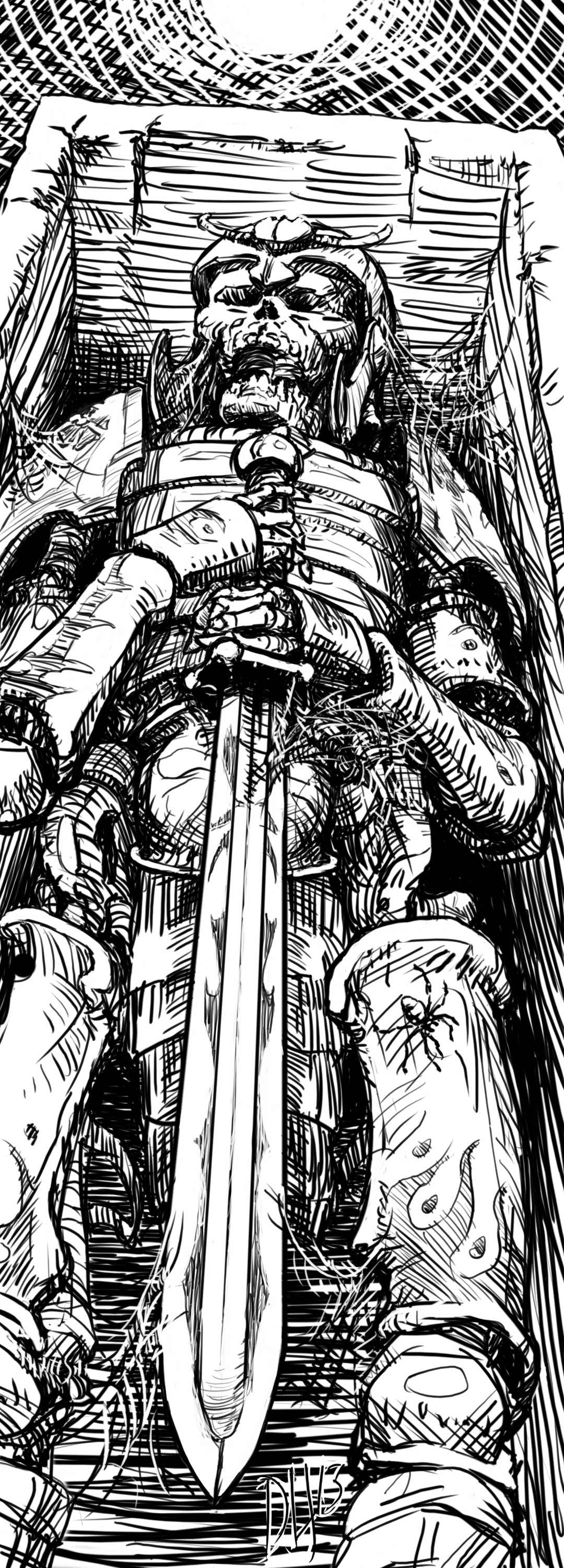

And all dared to brave unknown terrors, to do mighty deeds, to boldly split infinitives that no man had split before--and thus was the Empire forged.
― Douglas Adams, The Hitchhiker's Guide to the Galaxy
Teleportation and the Realms
Spells and Spell-like abilities that call upon beings from the surrounding area will not function if none of those creatures are located within the spells range (ie. Calling upon local animals to aid in battle or to give information can't work if you're millions of miles from a habitable place). Conjuration/Summoning spells will not work in the Phlogiston if they summon extra dimensional monsters or powers. No power, God, elemental, or other meta-planar creatre can be summoned in the Phlogiston, and any spell that attempts to do so will automatically fail. In addition, any spells that place the caster in contact with an extra dimensional power automatically fails in the Phlogiston.
Travel between the planes of existence functions normally within the various Crystal Shells. A character in Wildspace may go ethereal, enter the Astral Plane, or open a gate into one of the outer planes. In the Phlogiston, however, the dimensions cannot be accessed. Therefore, devices and spells (Bags of Holding, or Contact Other Plane) will not function. A device or spell that holds objects in external dimensions will still hold them, but the items cannot be accessed.
Fire
Within an air envelope, fire burns normally. Outside of an air envelope, there is a vacuum that will not support fire. Magical fire (such as the Fireball spell) will work in the vacuum of space as it is the sudden creation of fire that requires no air, though it will not cause anything outside of an air envelope to burst into flame, as no air exists to support the fire.
Within the Phlogiston, however, fire woks all too well. This affects both non-magical and magical flame. All effects from creating a flame (from the spark of a match to a 9th-level Fireball) are increased by 3x and explode immediately upon existence. This is such that igniting a match will cause serious burns (1d6 damage), and casting a 3rd level Fireball will cause 24d6 damage centered where it is cast (For example, in the hands of the Wizard casting it). It is advised to extinguish all flame-based light on the ship, and to avoid bringing Alchemist Fire into the Phlogiston.
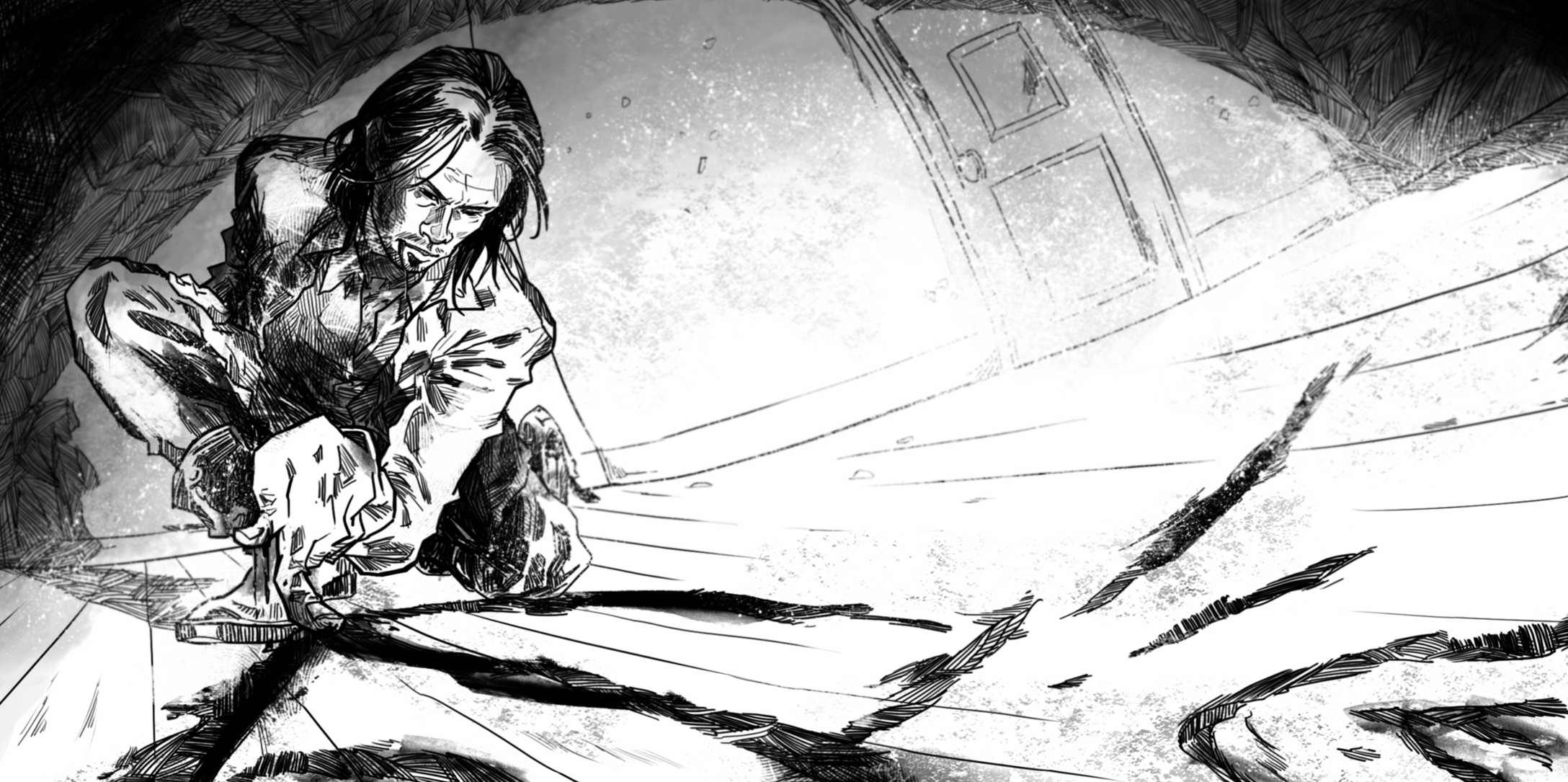
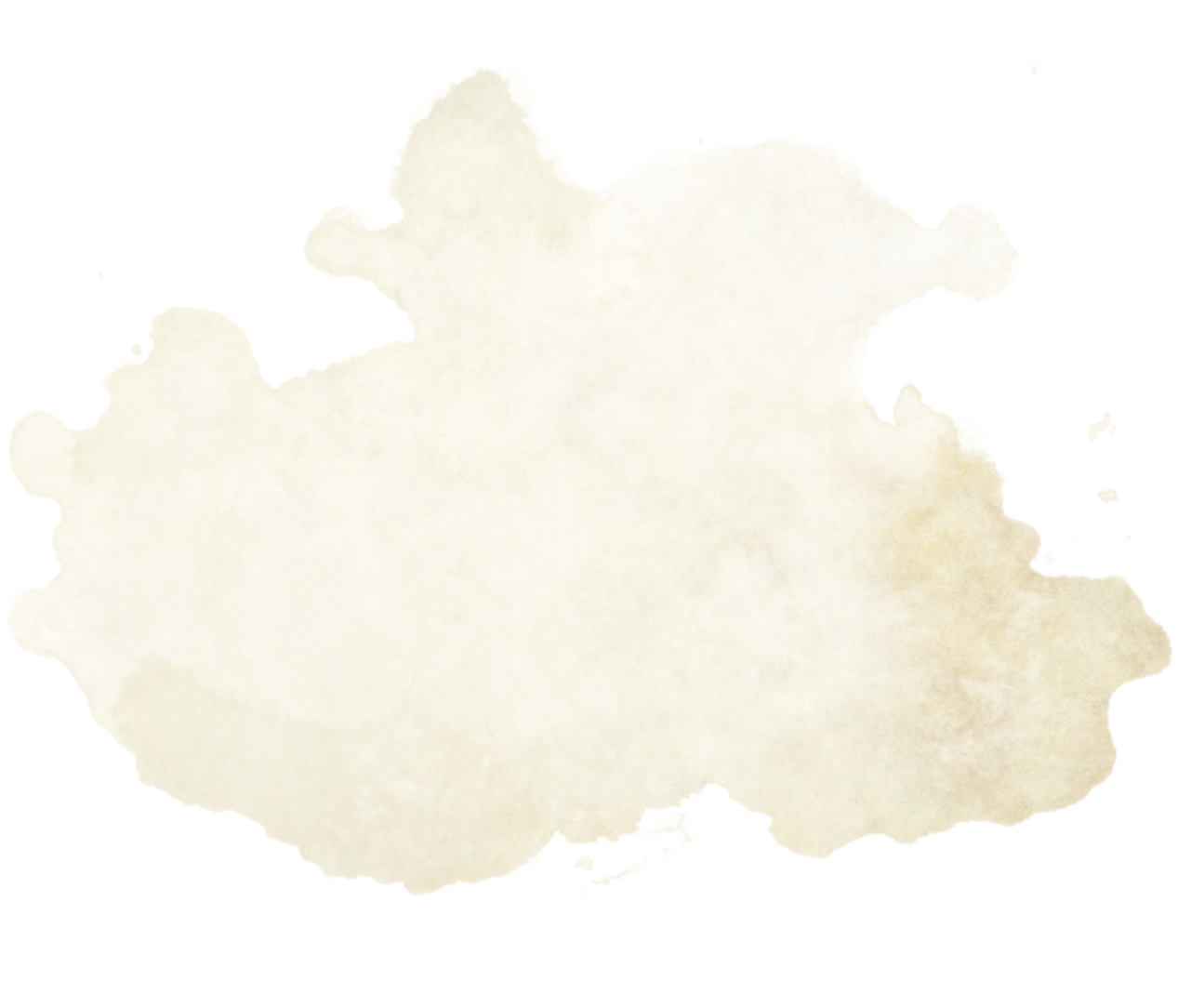





Spells
This chapter offers new spells for many of the classes in the Player's Handbook. The spells provide various way to harness the power of Wildspace and The Phlogiston. Your DM determines whether these spells are available at character creation, whether they are discovered drifting in the ruins of wrecked vessels, or whether you stumble upon them in an ancient library or other storehouse of magical knowledge.
1st Level
Create or Destroy Air
Cleric, Druid, Paladin, Ranger
2nd Level
Portal Magic
Bard, Sorcerer, Warlock, Wizard
3rd Level
Contact Home Power
Cleric, Druid, Paladin, Ranger
4th Level
Softwood
Bard, Cleric, Druid, Paladin, Ranger
5th Level
Create Helm
Bard, Sorcerer, Warlock, Wizard
Create or Destroy Air
1st level Transmutation
- Casting Time: 1 action
- Range: 100 feet
- Components: V, S, M (A small, stoppered flask)
- Duration: 10 minutes
You either create or destroy air.
Create Air
You replace, replenish, and refresh the air in a personal air envelope for 10 minutes for any creature within range, including air poisoned/tained by spells such as Cloudkill and Stinking Cloud. This does not create a larger in size envelope, but simply replenishes the air in the envelope that the creature drags with it. If the air is fouled, the air turns fresh again and the air timer resets to 10 minutes. If used within a spell or effect that causes a cloud (similar to the Fog Cloud, Cloudkill and Stinking Cloud spells) the creature is allowed an immediate save against the effects of the spell.
Destroy Air
The air envelope of a target creature within range immediately is reduced to Fouled status, with all effects of Fouled status. If air is already Fouled status, this spell has no effect.
At higher levels
When you cast this spell using a spell slot of 2nd level or higher, you may target one additional creature for each slot above 1st.
Portal Magic
2nd level Divination (Ritual)
- Casting time: 10 minutes
- Range: Half a mile
- Components: V, S, M (A conch shell)
- Duration: 1 minute
Casting out to the very Crystal Shell itself, you can sense the direction and distance (either in miles or in travel time) of the nearest portal of egress through a Crystal Shell.
In general, from any point on a Crystal Shell, naturally occurring portals for a ship are 2d10 days away. At DM’s discretion, there may be more, less, or no portals.
This spell may only be cast within half a mile of the surface of a Crystal Shell.
At Higher Levels
When you cast this spell using a spell slot of 5th level or higher, you may draw a circle in the air towards the Crystal Shell. A shimmering portal opens within the circle you drew and remains open for five minutes. The opening does not weaken the shell, and any objects resting physically on the shell are unaffected by the portal.
Portals created by this spell are magical and temporary, so they can be dispelled. If the portal is dispelled or otherwise prematurely closed, roll 1d10, and determine the result the fate of the object(s) passing through the opening as it closes:
- 1-5 - Portal closes before ship reaches shell. Ship must turn back using a Stunt, or Crash into the shell.
- 6-10 - Portal closes after ship passes through.
Contact Home Power
3rd level Conjuration (Ritual)
- Casting time: 1 Action
- Range: Self
- Components: V, S, M (A small toy horn, to be blown)
- Duration: One week, or until you leave the current Crystal Shell
You mentally establishes a tenuous link through the Astral Plane between your present location and that of the power you receives guidance from. This link permits the Cleric, Druid, Paladin, Ranger, and Warlock to regain spells above 3rd level as if their divine link was revered in the Crystal Sphere they currently reside.
Distance has no effect upon the attempt to contact the home power, but dimensional gates, anti-magic fields, and the effects of dispel magic will prevent the use of the spell. Additionally, the spell will not function in areas that power has been specifically banished from (whether from Banishment or some previous action by the power itself).
If power is forbidden, the caster will be informed through the spell that such contact is forbidden, but not the reason why. Passage into another plane, or into the ethereal will break the connection. While the spell is in effect, the caster will react positively to a Detect Magic spell.
The spell cannot be cast in the Phlogiston.
Softwood
4th level Transmutation
- Casting Time: 1 action
- Range: Touch
- Components: V, S, M (a handful of tree bark)
- Duration: Concentration, up to 1 minute
You attempt to turn one creature that you can see within range into a soft, spongy lump of wood, similar to that of a rotting stump.
The creature must make a Constitution saving throw. On a failed save, it is restrained as its flesh begins to grow mossy and brown. On a successful save, the creature isn’t affected. A creature restrained by this spell must make another Constitution saving throw at the end of each of its turns. If it successfully saves against this spell three times, the spell ends. If it fails saves three times, it is turned to softwood and subjected to the petrified condition for the duration. The successes and failures don’t need to be consecutive; keep track of both until the target collects three of a kind.
A shapechanger automatically succeeds on this saving throw.
The softwood lump is immune to all damage. A character turned to softwood could fall to Earth and the heat and impact of the fall would be absorbed by the spell.
If you maintain your concentration on this spell for the entire possible duration, the creature is turned to softwood until the effect is removed., or until the target is brought into contact with open air for 30 minutes.
Create Helm
5th level Enchantment (Ritual)
- Casting time: 1 minute
- Range: Touch
- Components: V, S, M (Chair, stool, or other seat-like object)
- Duration: Concentration, up to 1 hour
By casting this spell on a normal chair or other seat, this spell transforms that chair or seat into a Spelljammer Helm suitable for powering a Spelljamming ship. The Helm this spell creates provides a Helm rating of 1:3, similar to a Minor Helm. If this Helm is dispelled, the chair or other seat used for the Material component of this spell is destroyed.
You can Create a permanent Helm by casting this spell on the same seat-like object every day for one year. You need not use the Helm this spell creates when you cast the spell this way.
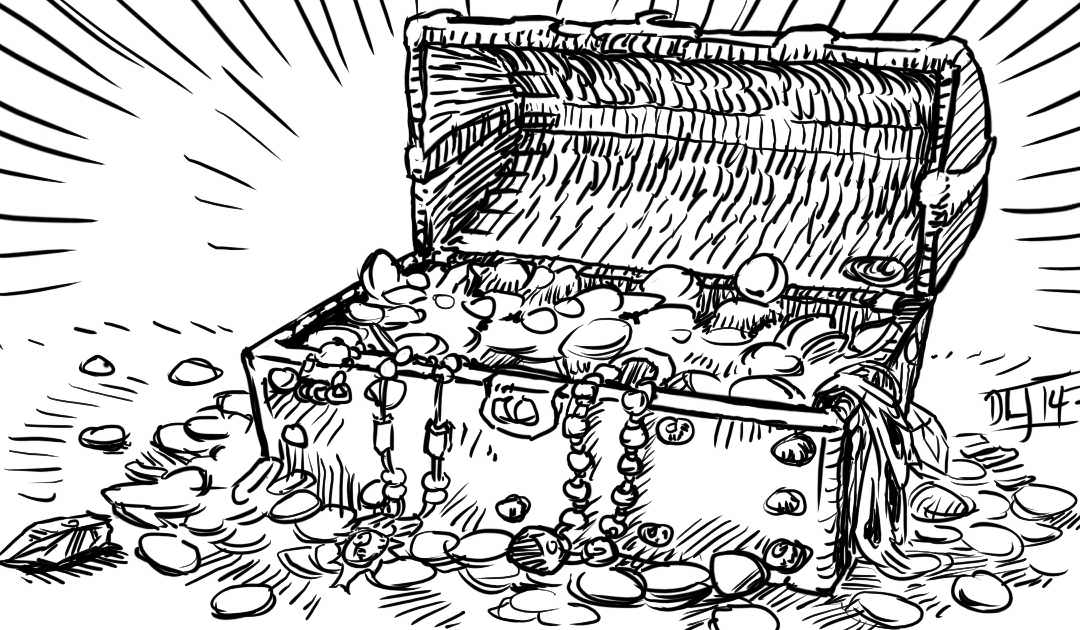

Feats
Laika Come Home
Being in space away from your ship allows you to think clearer than your allies, and your ability to maneuver isn't hindered by the pesky lack of gravity.
- You don't suffer disadvantage to ability checks and saving throws due to being in zero gravity.
- Your air envelope lasts twice as long in zero gravity. This does not include when on on a ship.
- When in an environment of extreme heat or extreme cold, you have advantage on constitution saving throws made to avoid exhaustion.
Nomad
You are adept at travelling the stars and navigating your way through ports throughout Wilspace and the Phlogiston. You've seen things and it shows:
- You have advantage on Survival checks to navigate and Perception checks that rely on Sight in Wildspace and the Phlogiston.
- The Speed of a ship that a character with the Nomad feat is increased by 1.
- Ability checks and saving throws made to avoid gaining the Poisoned, Charmed, and Restrained conditions are rolled with advantage.
Otherworldly Combatant
You've learned the ins and outs of fighting in a weightless atmosphere. When in zero gravity gain the following benefits:
- Your melee attacks are done so normally, not at disadvantage due to zero gravity. Other abilities may impose advantage or disadvantage on this attack separately.
- Attacking at long range doesn't impose disadvantage on your ranged weapon attack rolls.
Double Duty
You've pulled your share of all-nighters keeping up with a busy ship, and it shows. You are more prepared for anything the void might throw at you, the crew seems to hang on your every word, and the safety of a million spinning worlds is on your shoulders. You've got this; All you have to do is breathe.
- During each Ship Action combat phase, you can perform two total ship actions rather than one. The same action cannot be performed twice in a row. These ship actions may be selected from different Stations. Actions from the Helmsman station can only be used if the character with the Double Duty feat is actively using the helm.
- You automatically succeed on any Ship Shaken critical hit rolls.
- Roll advantage on all concentration checks against Spelljammer Shock.
- Damage to you from the Deck Crew Damage or Interior Crew Damage critical hits is reduced to 0.
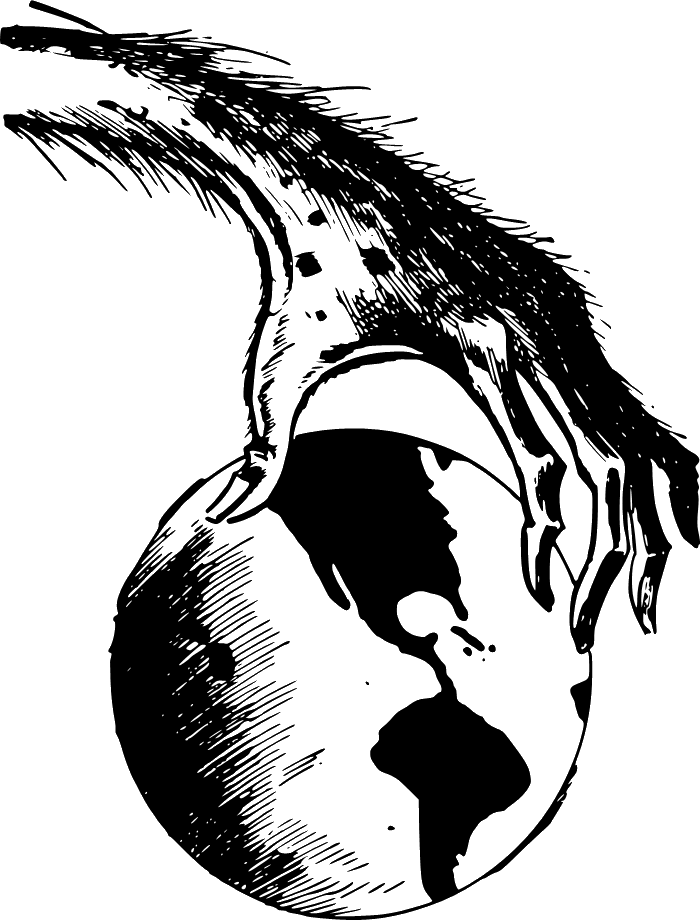
Celestial Mechanics
Traveling in a straight line, Spelljamming ships can attain extremely high velocity relatively quickly, spanning the great emptiness between planets in a short time. On the other hand, planets and other space-bourne bodies move relatively slow; so slowly that they can be thought of as being a fixed point on a map, similar to a town or overworld map you may have seen previously. You can think of mapping the star chart of Wildspace itself similarly to a massive Dungeon as well; treating rooms as stars and planets, rubble as asteroid fields, stairs as wormholes, etc. This chapter will help you create the star systems to fill your campaigns.
Whether operating under Newtonian physics, riding on the back of giant turtles, or rolling across a velvet pool table of the gods, most planets behave in a similar fashion. There are systems where the planets operate in a totally chaotic manner, as well as those where the planets are truly unmoving points in the night sky. There are crystal shells so small that they contain only a single world. There are shells which contain one single flat disk that extends to the very edges of the sphere, and spheres which may contain more spheres. Most systems have a central fire world (think Sol, the star of our solar system), and all planets will be rotating around that central fire world. Use the rules below to help create the Crystal Shells in your game.
Creating your Universe
Use the tables below to create a planetary system from scratch; there are seven steps:
- Type of System: Is it a standard system (planets orbiting around a central point), or special system?
- Primary Body: What is the primary body, for which all planets orbit around? (Planet, Black Hole, etc)
- Number of planets: How many main planets orbit the primary body?
- Orbits and Placement: What are the orbital rings of each body? Where are they located relative to each other?
- For each body:
- What is its size?
- What is its type?
- What is its shape?
- Any other notes: such as moons or inhabitants?
- Population and Technology Level: Is there any civilization? Do some or all of the civilizations in this area have Spelljamming capabilities?
- Distance: What is the distance to the Crystal Shell of the system? (twice the orbit of the furthest major body)
The type of system you create guides the rest of this section, and will determine the overall structure of the galaxy contained within a Crystal Shell. After this step, proceed through the rest of the steps to determine the makeup of your randomly generated star system.
1. Type of system
| D10 | Type |
|---|---|
| 1-7 | Standard System |
| 8-10 | Special System; Roll another 1d10 and use result below |
| Special Systems | |
| 1-2 | Fixed System; Planets don't rotate around central point |
| 3-4 | Chaotic/Random movement |
| 5-6 | Semi-random movement |
| 7-8 | Strange; See note below |
| 9 | Void (Nothing; or debris); Stop rolling |
| 10 | Nested Spheres; After creating the first system, create another to determine second system |
In the case of a Strange roll, use your imagination and speak to your players to come up with what the sphere contains.
In the case of a Void roll, don't assume a "Void" as lacking story elements. An entire Crystal Sphere of planet debris definitely has a story to tell . . .
This is not an exhaustive list; Your sphere could contain Planets mounted on enormous clockwork gears, spinning indefinitely; Planets eternally tumbling down a hill; Planets on the backs of titans; Planets nestled as berries in an enormous tree; or on the pool table/chess board of the gods and titans themselves.
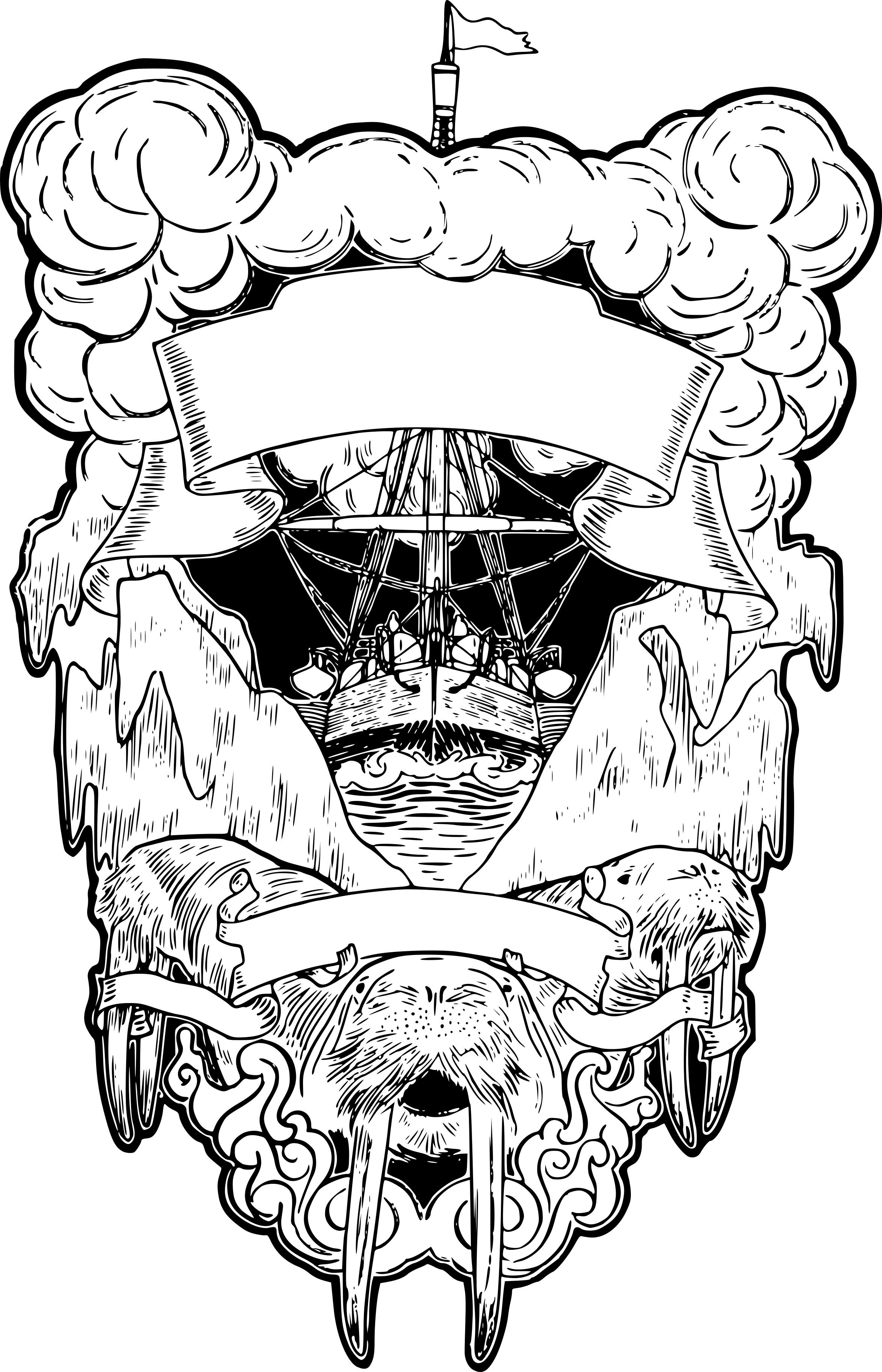
2. Primary Body
| D10 | Body |
|---|---|
| 1-6 | Fire body (like the Sun) |
| 7 | Earth body (like Earth) |
| 8 | Wind body (like a Gas Giant) |
| 9 | Water bodies (like a planet of mostly ocean or ice) |
| 10 | Special (Roll on table below) |
| D10 | Special |
| 1 | Portal to Outer Plane |
| 2 | Portal to Plane of Elemental Fire |
| 3 | Portal to Plane of Elemental Earth |
| 4 | Portal to Plane of Elemental Water |
| 5 | Portal to Plane of Elemental Air |
| 6 | Portal to Positive Material Plane |
| 7 | Portal to Negative Material Plane |
| 8 | 1d4 Primary Bodies |
| 9 | Portal to another shell |
| 10 | Liveworld |
The Primary Body of a Crystal Shell is the central point of a Crystal Sphere. This of this like a star. Usually, it is a fire body like the Sun of our solar system, but other possibilities may occur that can be interesting points in your campaign.
A Liveworld is a living being, the size of a planet, that sits as the center of a Crystal Sphere.
If a Portal to an Outer Plane is rolled, Roll 1d8 and use the chart below to determine the plane that exists on the other end of the portal. Optionally, the DM may create a plane of her choosing.
| D8 | Result |
|---|---|
| 1 | Abaddon - Lawful Evil |
| 2 | Avalon - Lawful Good |
| 3 | Duma - Neutral Evil |
| 4 | Malebolge - Chaotic Evil |
| 5 | Nirvana - Neutral Good |
| 6 | Purgatory - Lawful Neutral |
| 7 | Valhalla - Chaotic Good |
| 8 | Vigrond - Chaotic Neutral |
You can read more about other Planes by referring to the Dungeon Master's Guide, Chapter 2.
3. Number of Planets
Roll 2d10 to determine the number of planets in the system. You may also choose to replace one of the planets with an asteroid field.
You may want to have more planets or a single planet in the system you create. The DM is advised to use her discretion in determining how many planets each galaxy contains - too many planets may be difficult to keep track of.
4. Orbits and Placement
Standard systems orbiting around a Primary body have a perfectly circular orbit (This is to keep with our simple random generation theme). In order to place our planets in this system easily, we have 100 circular "rings", stepping increasingly away from the Primary Body in 50 million mile (A half-days of travel) increments; Planets and other space-bourne bodies can only appear on these rings, and the rings represent their orbital trajectory around the Primary Body.
A Spelljamming ship in Wildspace travels at 100 million miles in a 24 hour period (about 4 million miles per hour). This means that, from the Primary Body to the closest point on the first "ring", it will take 12 hours of uninterruped travel in a Spelljamming ship. From the Primary Body to the closest point of the final "ring" (Ring number 100), it takes 50 days of uninterrupted travel in a Spelljamming ship.
For each of the planets created, roll a D100 to determine what ring it lands on. If you roll the same number twice, you can choose to either re-roll or move the planet to an adjacent ring. Keep in mind that familiarity breeds contempt, and neighboring planets may not be on the best of terms . . .
Planets rotating around a Primary Body aren't always in perfect alignment and right next to one-another for simple travel. Earth and Mars are sometimes on opposite sides of the Sun, so to travel from the Earth to Mars will take time to reach the Sun, and then more time to reach Mars. You can determine the positions of your planets upon creation of the galaxy by dividing the rings into eight separate sections, as straight lines extending outwards from the Primary Body. Roll 1d8 for each planet or other space-bourne body to determine which section the planet starts in on the ring.
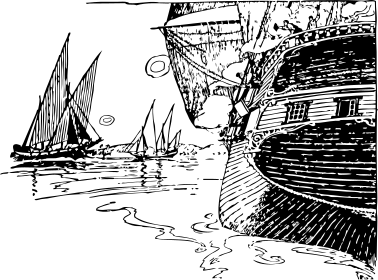
Optionally, the DM may rotate their planets around the central body if the campaign lasts for a extended time -- Rings 1 - 25 complete a rotation around the central body in half a standard Earth year, rings 26-50 take one standard Earth year, rings 51-75 take a standard Earth year and a half, and rings 76-100 take two standard Earth years.
It's generally advised to use the average distance when informing players of travel time between two space-bourne bodies, to keep things simple. The average relative travel time between the Earth and Mars would be relayed as 34 hours, or just under a day and a half. Optionally, the furthest or closest distance that the planets could be on their rotation could be taken into account when determining travel distance. For example, the closest distance from Earth to Mars would take as little as 8.5 hours of travel in a Spelljamming vessel whereas farthest distance would take 2.5 days in a Spelljamming vessel.
You may also choose to have these planets orbit on more or less than circular orbital trajectory, similarly to real life. For ease of calculating distances with this option, the ellipses you create will still step out from the Primary Body. The distance to the closest point will be half that of a perfect circle, and the distance to the farthest point will be double that of a perfect circle. For example, the closest point of the first ellipse will take merely 6 hours to reach by Spelljamming vessel, but the farthest point in the first ellipse will take a full day's travel (24 hours). Likewise the closest point on ellipse number 100 will take 25 days to reach, but the farthest point will take 100 days to reach.
5. Planet statistics
There are six sizes of Celestial bodies, listed as Size A through F. They are referred to as Tiny (A), Small (B), Medium (C), Large (D), Huge (E), and Gargantuan (F).
Earth, and most Earth-like fantasy campaigns, are Size C.
A Celestial body containing a gravity well and/or atmosphere is any body of 10 tons or greater space displacement (300 cubic feet, or a cube slightly less than 14 feet on a side). Small items such as Rowboats and Elvish Flitters which rate under 10 tons do not have this effect. The bright star at the very center is a planet of pure fire. The block of ice on the outermost edge is also a planet. The systems you generate do not have to make sense in a "Goldilocks Zone" fashion.
Roll 1d6 on the table below to determine planet size:
Celestial Body Size Categories
| 1d6 | Class | Measurement |
|---|---|---|
| 1 | Size A | Less than 100 miles across |
| 2 | Size B | 101-10,000 miles across |
| 3 | Size C | 10,001-100,000 miles across |
| 4 | Size D | 100,001-1,000,000 miles across |
| 5 | Size E | 1,000,001-10,000,000 miles across |
| 6 | Size F | 10,000,001 miles across or greater |
Each planet in your galaxy may be a different shape. Roll below to determine the shape of the planet that is encountered. Remember, gravity on a spherical world is a central point at the center of world, and gravity on a Spelljamming ship is a straight line, bisecting the ship itself. Keep this in mind when the planet shape is determined.
Planet Shape
| D10 Roll | Planet Shape |
|---|---|
| 1 | Amorphous/Irregular |
| 2 | Cluster |
| 3 | Cubic |
| 4-6 | Spherical |
| 7 | Flatworld |
| 8 | Elliptical |
| 9 | Triangular |
| 10 | Belt/Ring |
When a Spelljamming ship encounters a planet, the planet will also have a prevailing terrain type, largely determined by its overall planetary conditions. Roll twice on the table below to determine a generalized, overall planetary condition; Your first roll will be the "Main" condition type, and the second roll will be a "Sub" condition, to give you ideas on how to flavor the worlds that fill your skies. Remember that civilization will thrive in many conditions, and adventure should be able to happen anywhere to keep your players interested.
Planet Conditions
| D4 | Conditions |
|---|---|
| 1 | Air ("Gas Giant" Planet; May not have land-able surface; "Surface" may consist of floating islands) |
| 2 | Earth (Jungle/Forest/Plains/Hills/Mountains) |
| 3 | Water (Water/Ice/Steam) |
| 4 | Fire (Desert/Mountains/Lava) |
For example, a Water/Earth planet may generate the Earth we know in our solar system, and an Earth/Fire planet may generate the Mars we know in our solar system. In the case of rolling the same type of conditions for both the Main- and Sub-type, the condition that's rolled would be overwhelmingly abundant on the planet, such as a planet made entirely of water or jungle.
For each planet in your galaxy roll 1d12 on the table below:
Moons
| d12 | Moon Type |
|---|---|
| 1-7 | No moons |
| 8 | Planetary ring |
| 9 | 1d4 barren moons |
| 10 | Habitable moon: roll on Planet Color table for technology level, and on Planet Conditions table for conditions |
| 11 | Colony/Mine |
| 12 | Roll 1d8+2 twice on this table |
6. Population and Technology
When players enter a dungeon room, they are able to ascertain information from the various objects in the room. The same will show for the galaxy's you create. There are several planet types that can be encountered, and their color (shown on a map or display, or seen twinkling from a distance) generally determines a generalized society and technology level that will be encountered when visiting that star.
Planet Color
| D8 | Planet Color |
|---|---|
| 1 | Red |
| 2 | Orange |
| 3 | Yellow |
| 4 | Green |
| 5 | Blue |
| 6 | Violet |
| 7 | Black |
| 8 | White |
Red- Dead; littered with forgotten dungeons, relics, and ancient evil. Has no life, or almost no life.
Orange- Dying; Post-societial barbarism. Civilization has collapsed, for the most part. Remnants of old, broken technology and magic.
Yellow- Primeval; Large swaths of unexplored wilderness. Beginnings of civilization.
Green- Early Civilization; Possibility of early firearms.
Blue- Civilized; DM discretion determines technology level appropriate for the campaign. Generally advised to be equal to the PC's tech level.
Violet- Highly Advanced; Generally advised to contain technology more advanced/different than the current technology the PC's have seen.
Black- This planet appears dark, almost silhouetted against the void of space. It hides it's true technology level. Roll 1d6 on Planet Color table to determine the stars actual technology level, keeping the Black color.
White- Sentient planet with mystical powers.
A generalized technology and society level of a planet is well and good, but if nobody is there to use the technology, what good is it? Now that you've created the universe, you've got to fill it with things for your players. There are several types of encounters that can take place in the depths of space and on the surface (or below the surface) of a planet. Keep in mind that all encounters in Wildspace may not be dangerous.
Random Encounters
While real space is filled with empty void, fantasy wildspace is a place of adventure and mystery. Roll on the table below to use as idea seeds to fill your campaign with interesting events.
Random Encounter Table
| D20 | Random Encounter |
|---|---|
| 1 | Planetary/Wildspace Storm |
| 2 | Space Pirates |
| 3 | Space and/or Time Anomaly |
| 4 | Dead Ship, with no distress signal |
| 5 | NPC in space (clinging to floating debris) |
| 6 | Random Dragon Encounter |
| 7 | Large NPC convoy of ships, guarded |
| 8 | Ship encounter, same size as party's ship |
| 9 | 1d4 vessels, in the midst of combat |
| 10 | Ancient space probe, similar to the Voyager |
| 11 | Crew-related Event: intruder, stowaway, sickness, etc |
| 12 | Ship encounter, smaller than party's ship |
| 13 | Trader encounter |
| 14 | Harmless School of random beast encounter |
| 15 | Ship encounter, larger than party's ship |
| 16 | Boarding Party |
| 17 | Undead Encounter |
| 18 | Cargo related event |
| 19 | Dead Ship, signalling distress |
| 20 | Space Leviathan |
Everything Else
Thinking of the galaxy we've created here, we've come up with the overall feel of the inside of this Crystal Shell, the Primary Body, all celestial bodies that surround it, as well as a generalized look and feel of each of those bodies, and seeds to what those bodies contain. It is now up to the DM to determine what to fill each of these worlds with.
Entire campaigns have taken place on single planets, continents, and even in single cities. Spelljammer is no different; the worlds you create can be as many and varied as the number of stars in the sky. The only differeGrant and Consideratinces are that now, entire campaigns will be able to span millions of potential worlds and touch the lives of the various beings that exist there.
The only limit is your imagination.
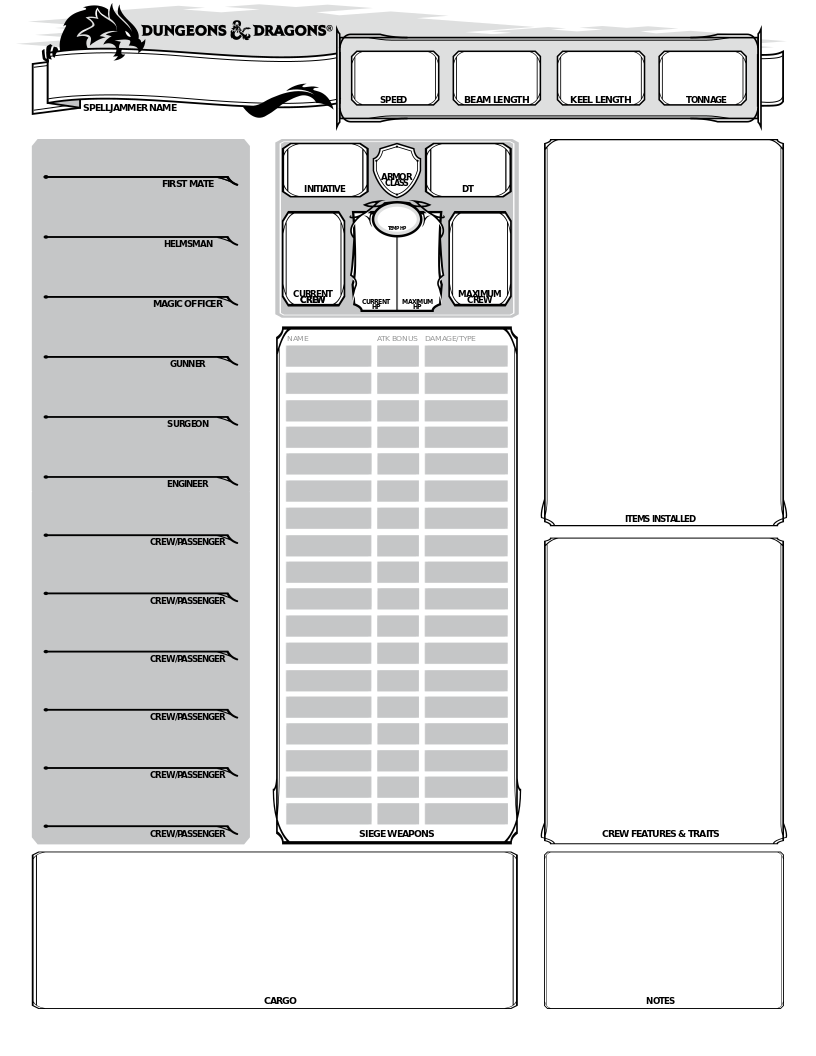
LEGAL INFORMATION
Permission to copy, modify and distribute the files collectively known as the System Reference Document (“SRD”) is granted solely through the use of the Open Gaming License, Version 1.0a. This material is being released using the Open Gaming License Version 1.0a and you should read and understand the terms of that license before using this material.
The text of the Open Gaming License itself is not Open Game Content. Instructions on using the License are provided within the License itself.
The following items are designated Product Identity, as defined in Section 1(e) of the Open Game License Version 1.0a, and are subject to the conditions set forth in Section 7 of the OGL, and are not Open Content: Dungeons & Dragons, D&D, Player’s Handbook, Dungeon Master, Monster Manual, d20 System, Wizards of the Coast, d20 (when used as a trademark), Forgotten Realms, Faerûn, proper names (including those used in the names of spells or items), places, Red Wizard of Thay, the City of Union, Heroic Domains of Ysgard, Ever-Changing Chaos of Limbo, Windswept Depths of Pandemonium, Infinite Layers of the Abyss, Tarterian Depths of Carceri, Gray Waste of Hades, Bleak Eternity of Gehenna, Nine Hells of Baator, Infernal Battlefield of Acheron, Clockwork Nirvana of Mechanus, Peaceable Kingdoms of Arcadia, Seven Mounting Heavens of Celestia, Twin Paradises of Bytopia, Blessed Fields of Elysium, Wilderness of the Beastlands, Olympian Glades of Arborea, Concordant Domain of the Outlands, Sigil, Lady of Pain, Book of Exalted Deeds, Book of Vile Darkness, beholder, gauth, carrion crawler, tanar’ri, baatezu, displacer beast, githyanki, githzerai, mind flayer, illithid, umber hulk, yuan-ti.
All of the rest of the SRD is Open Game Content as described in Section 1(d) of the License.
More information on the Open Game License can be found at www.wizards.com/d20.
The terms of the Open Gaming License Version 1.0a are as follows:
OPEN GAME LICENSE Version 1.0a
The following text is the property of Wizards of the Coast, Inc. and is Copyright 2000 Wizards of the Coast, Inc ("Wizards"). All Rights Reserved.
-
Definitions: (a)"Contributors" means the copyright and/or trademark owners who have contributed Open Game Content; (b)"Derivative Material" means copyrighted material including derivative works and translations (including into other computer languages), potation, modification, correction, addition, extension, upgrade, improvement, compilation, abridgment or other form in which an existing work may be recast, transformed or adapted; (c) "Distribute" means to reproduce, license, rent, lease, sell, broadcast, publicly display, transmit or otherwise distribute; (d)"Open Game Content" means the game mechanic and includes the methods, procedures, processes and routines to the extent such content does not embody the Product Identity and is an enhancement over the prior art and any additional content clearly identified as Open Game Content by the Contributor, and means any work covered by this License, including translations and derivative works under copyright law, but specifically excludes Product Identity. (e) "Product Identity" means product and product line names, logos and identifying marks including trade dress; artifacts; creatures characters; stories, storylines, plots, thematic elements, dialogue, incidents, language, artwork, symbols, designs, depictions, likenesses, formats, poses, concepts, themes and graphic, photographic and other visual or audio representations; names and descriptions of characters, spells, enchantments, personalities, teams, personas, likenesses and special abilities; places, locations, environments, creatures, equipment, magical or supernatural abilities or effects, logos, symbols, or graphic designs; and any other trademark or registered trademark clearly identified as Product identity by the owner of the Product Identity, and which specifically excludes the Open Game Content; (f) "Trademark" means the logos, names, mark, sign, motto, designs that are used by a Contributor to identify itself or its products or the associated products contributed to the Open Game License by the Contributor (g) "Use", "Used" or "Using" means to use, Distribute, copy, edit, format, modify, translate and otherwise create Derivative Material of Open Game Content. (h) "You" or "Your" means the licensee in terms of this agreement.
-
The License: This License applies to any Open Game Content that contains a notice indicating that the Open Game Content may only be Used under and in the terms of this License. You must affix such a notice to any Open Game Content that you Use. No terms may be added to or subtracted from this License except as described by the License itself. No other terms or conditions may be applied to any Open Game Content distributed using this License.
-
Offer and Acceptance: By Using the Open Game Content You indicate Your acceptance of the terms of this License.
-
Grant and Consideration: In consideration for agreeing to use this License, the Contributors grant You a perpetual, worldwide, royalty-free, non-exclusive license with the exact terms of this License to Use, the Open Game Content.
5.Representation of Authority to Contribute: If You are contributing original material as Open Game Content, You represent that Your Contributions are Your original creation and/or You have sufficient rights to grant the rights conveyed by this License.
6.Notice of License Copyright: You must update the COPYRIGHT NOTICE portion of this License to include the exact text of the COPYRIGHT NOTICE of any Open Game Content You are copying, modifying or distributing, and You must add the title, the copyright date, and the copyright holder's name to the COPYRIGHT NOTICE of any original Open Game Content you Distribute.
-
Use of Product Identity: You agree not to Use any Product Identity, including as an indication as to compatibility, except as expressly licensed in another, independent Agreement with the owner of each element of that Product Identity. You agree not to indicate compatibility or co-adaptability with any Trademark or Registered Trademark in conjunction with a work containing Open Game Content except as expressly licensed in another, independent Agreement with the owner of such Trademark or Registered Trademark. The use of any Product Identity in Open Game Content does not constitute a challenge to the ownership of that Product Identity. The owner of any Product Identity used in Open Game Content shall retain all rights, title and interest in and to that Product Identity.
-
Identification: If you distribute Open Game Content You must clearly indicate which portions of the work that you are distributing are Open Game Content.
-
Updating the License: Wizards or its designated Agents may publish updated versions of this License. You may use any authorized version of this License to copy, modify and distribute any Open Game Content originally distributed under any version of this License.
-
Copy of this License: You MUST include a copy of this License with every copy of the Open Game Content You Distribute.
-
Use of Contributor Credits: You may not market or advertise the Open Game Content using the name of any Contributor unless You have written permission from the Contributor to do so.
-
Inability to Comply: If it is impossible for You to comply with any of the terms of this License with respect to some or all of the Open Game Content due to statute, judicial order, or governmental regulation then You may not Use any Open Game Material so affected.
-
Termination: This License will terminate automatically if You fail to comply with all terms herein and fail to cure such breach within 30 days of becoming aware of the breach. All sublicenses shall survive the termination of this License.
-
Reformation: If any provision of this License is held to be unenforceable, such provision shall be reformed only to the extent necessary to make it enforceable.
-
COPYRIGHT NOTICE Open Game License v 1.0a Copyright 2000, Wizards of the Coast, Inc.
System Reference Document Copyright 2000-2003, Wizards of the Coast, Inc.; Authors Jonathan Tweet, Monte Cook, Skip Williams, Rich Baker, Andy Collins, David Noonan, Rich Redman, Bruce R. Cordell, John D. Rateliff, Thomas Reid, James Wyatt, based on original material by E. Gary Gygax and Dave Arneson.
Modern System Reference Document Copyright 2002, Wizards of the Coast, Inc.; Authors Bill Slavicsek, Jeff Grubb, Rich Redman, Charles Ryan, based on material by Jonathan Tweet, Monte Cook, Skip Williams, Richard Baker, Peter Adkinson, Bruce R. Cordell, John Tynes, Andy Collins and JD Wiker
Unearthed Arcana, Copyright 2004, Wizards of the Coast, Inc.; Authors Andy Collins, Jesse Decker, David Noonan, and Rich Redman Villains, Copyright 2002, Bastion Press, Inc.
Dynasties and Demagogues, Copyright 2003, Trident, Inc. d/b/a Atlas Games; Author Chris Aylott.
Occult Lore, Copyright 2002, Trident, Inc. d/b/a Atlas Games; Authors Keith Baker, Adam Bank, Chris Jones, Scott Reeves, and Elton Robb.
Crime and Punishment, Copyright 2003, Trident Inc. d/b/a Atlas Games; author Keith Baker.
System Reference Document 5.1 Copyright 2016, Wizards of the Coast, Inc.; Authors Mike Mearls, Jeremy Crawford, Chris Perkins, Rodney Thompson, Peter Lee, James Wyatt, Robert J. Schwalb, Bruce R. Cordell, Chris Sims, and Steve Townshend, based on original material by E. Gary Gygax and Dave Arneson.
The Book of Fiends © 2003, Green Ronin Publishing; Authors: Aaron Loeb, Erik Mona, Chris Pramas, and Robert J. Schwalb.
Amphisbaena from the Tome of Horrors Complete © 2011, Necromancer Games, Inc., published and distributed by Frog God Games; Author: Scott Greene, based on original material by Gary Gygax.
Angel, Monadic Deva from the Tome of Horrors Complete© 2011, Necromancer Games, Inc., published and distributed by Frog God Games; Author: Scott Greene, based on original material by Gary Gygax.
Bat, Mobat from the Tome of Horrors Complete© 2011, Necromancer Games, Inc., published and distributed by Frog God Games; Authors: Scott Greene and Clark Peterson, based on original material by Gary Gygax.
Cave Fisher from the Tome of Horrors Complete© 2011, Necromancer Games, Inc., published and distributed by Frog God Games; Author: Scott Greene, based on original material by Lawrence Schick.
Daemon, Piscodaemon from the Tome of Horrors Complete© 2011, Necromancer Games, Inc., published and distributed by Frog God Games; Author: Scott Greene, based on original material by Gary Gygax.
Demon Lord, Baphomet from the Tome of Horrors Complete © 2011, Necromancer Games, Inc., published and distributed by Frog God Games; Author: Scott Greene, based on material by Gary Gygax.
Demon Lord,Jubilex from the Tome of Horrors Complete© 2011, Necromancer Games, Inc., published and distributed by Frog God Games; Author: Scott Greene, based on material by Gary Gygax.
Demon Lord, Kostchtchie from the Tome of Horrors Complete© 2011, Necromancer Games, Inc., published and distributed by Frog God Games; Author: Scott Greene, based on material by Gary Gygax.
Demon Lord, Orcus from the Tome of Horrors Complete © 2011, Necromancer Games, Inc., published and distributed by Frog God Games; Author: Scott Greene and Clark Peterson, based on material by Gary Gygax.
Demon Lord, Pazuzu from the Tome of Horrors Complete© 2011, Necromancer Games, Inc., published and distributed by Frog God Games; Author: Scott Greene, based on material by Gary Gygax.
Grippli from the Tome of Horrors Complete© 2011, Necromancer Games, Inc., published and distributed by Frog God Games; Author: Scott Greene, based on original material by Gary Gygax.
Rot Grub from the Tome of Horrors Complete© 2011, Necromancer Games, Inc., published and distributed by Frog God Games; Authors: Scott Greene and Clark Peterson, based on original material by Gary Gygax.
Soul Eater from the Tome of Horrors Complete© 2011, Necromancer Games, Inc., published and distributed by Frog God Games; Author: Scott Greene, based on original material by David Cook.
Pathfinder Campaign Setting: Inner Sea Gods © 2014, Paizo Publishing, LLC; Authors: Sean K Reynolds, with Amanda Hamon, James Jacobs, John Ling, Mark Moreland, David N. Ross, F. Wesley Schneider, Amber E. Scott, Tork Shaw, James L. Sutter,Jerome Virnich.
EN World EN5ider. Copyright 2015–2017 EN Publishing.
EN World EN5ider Presents: A Touch of Class. Copyright 2017 EN Publishing.
END OF LICENSE
